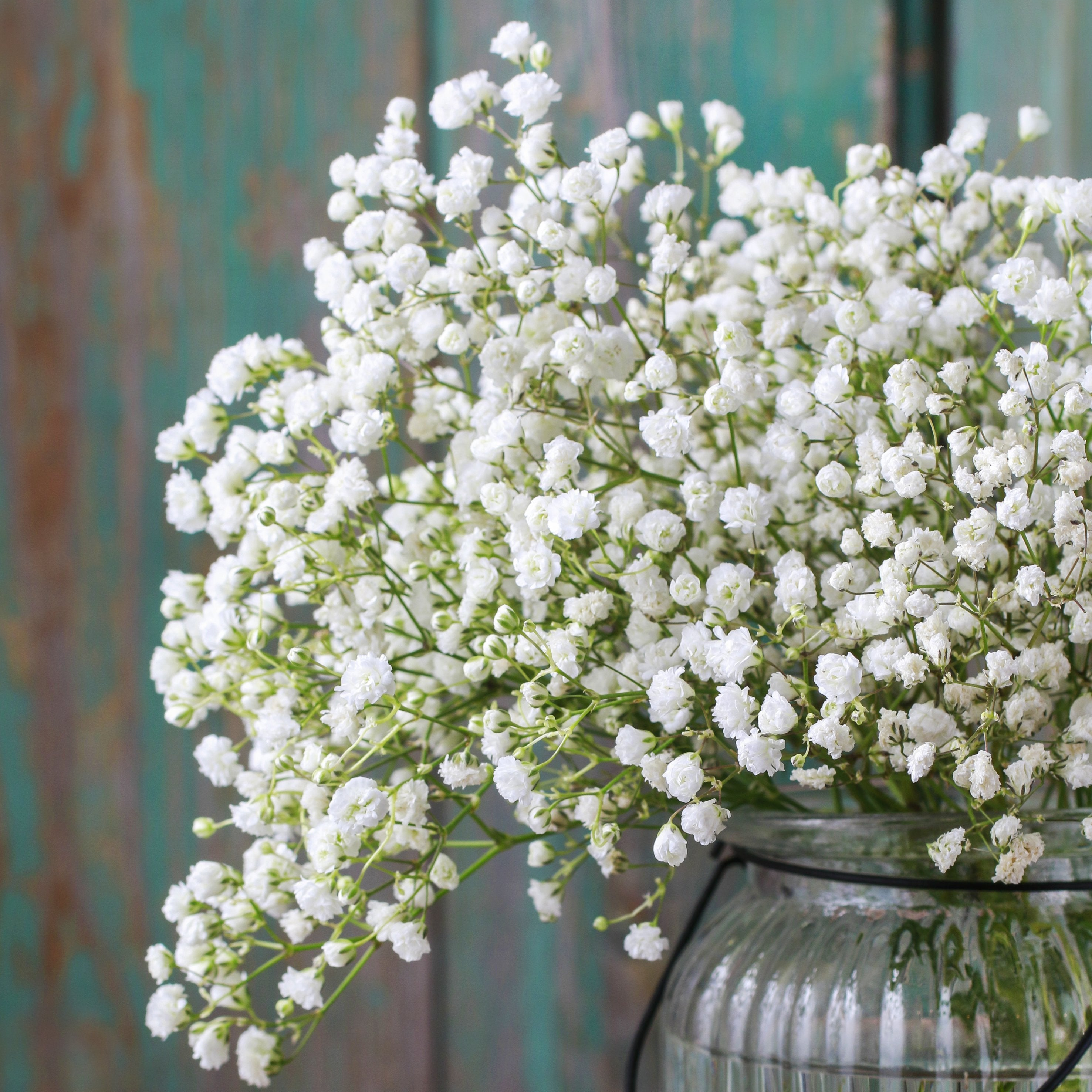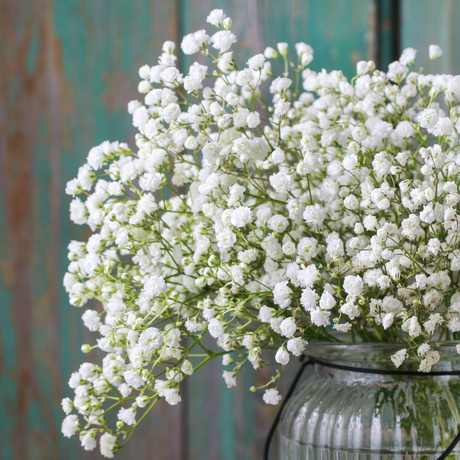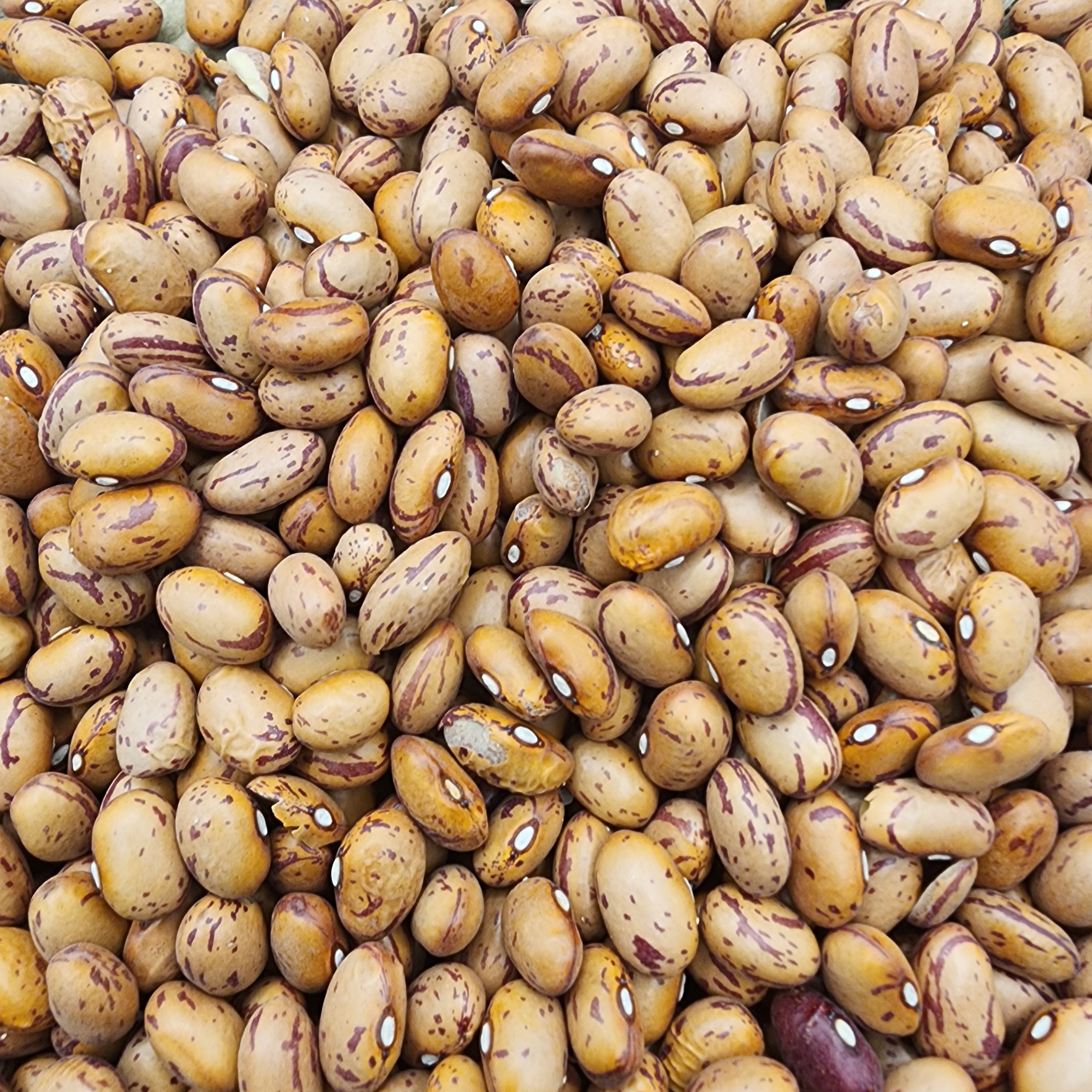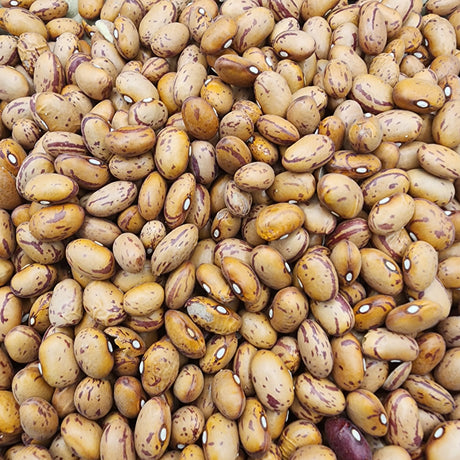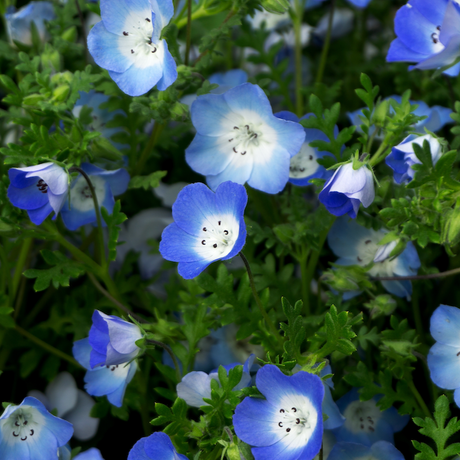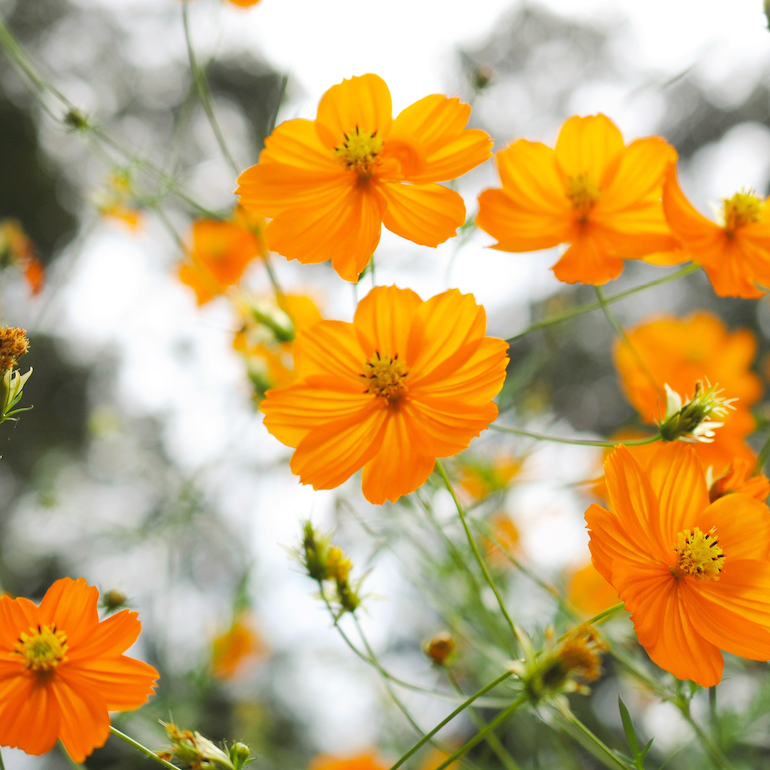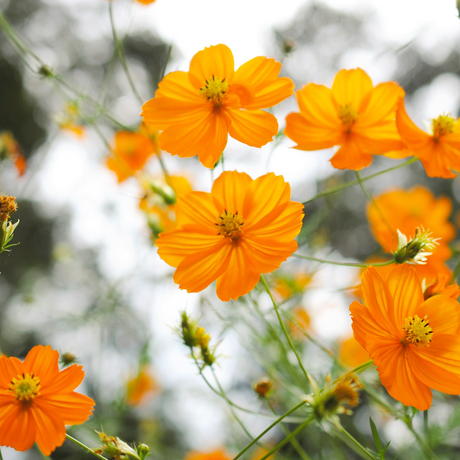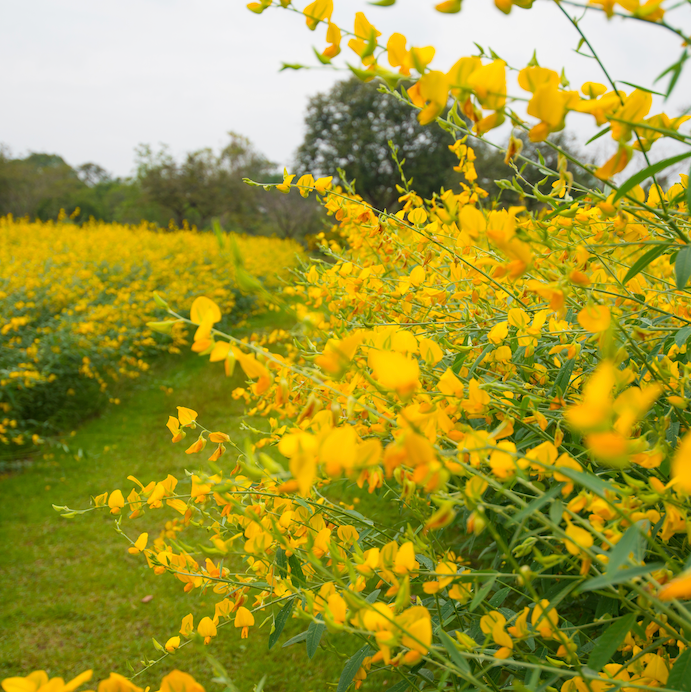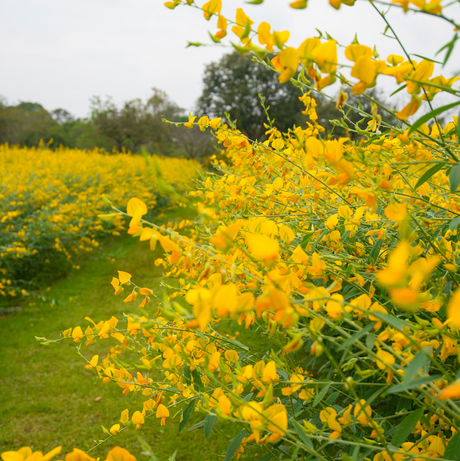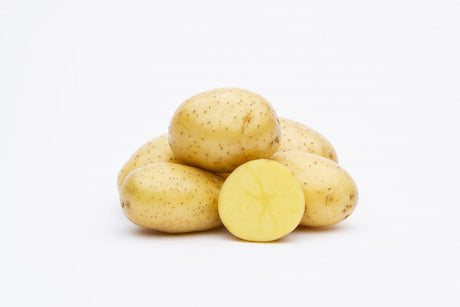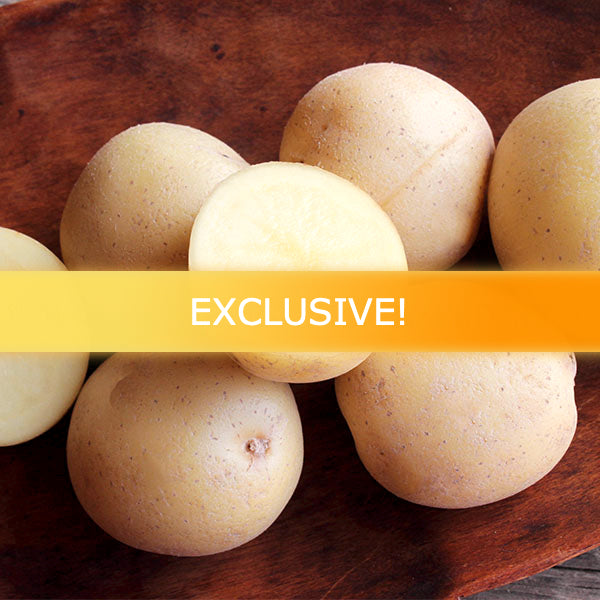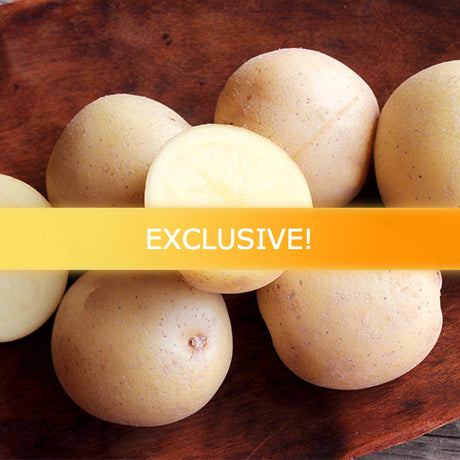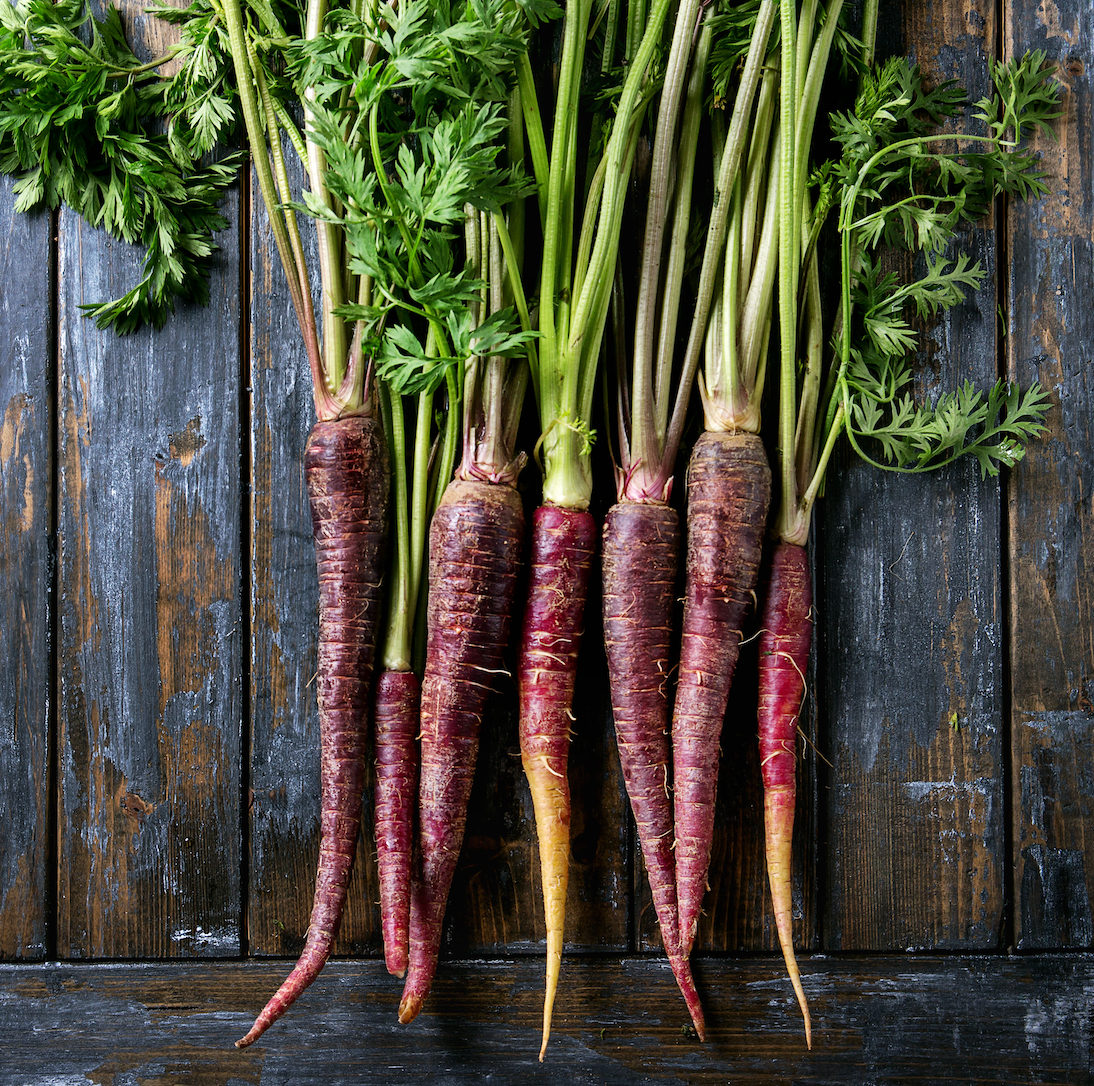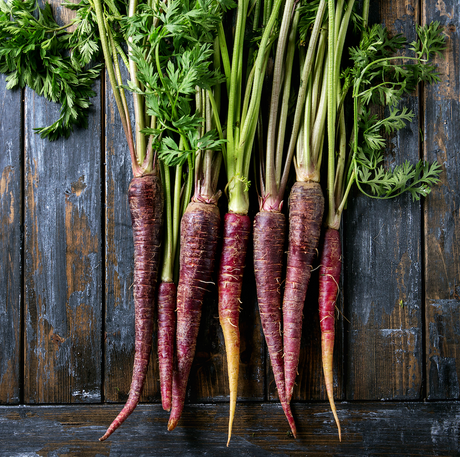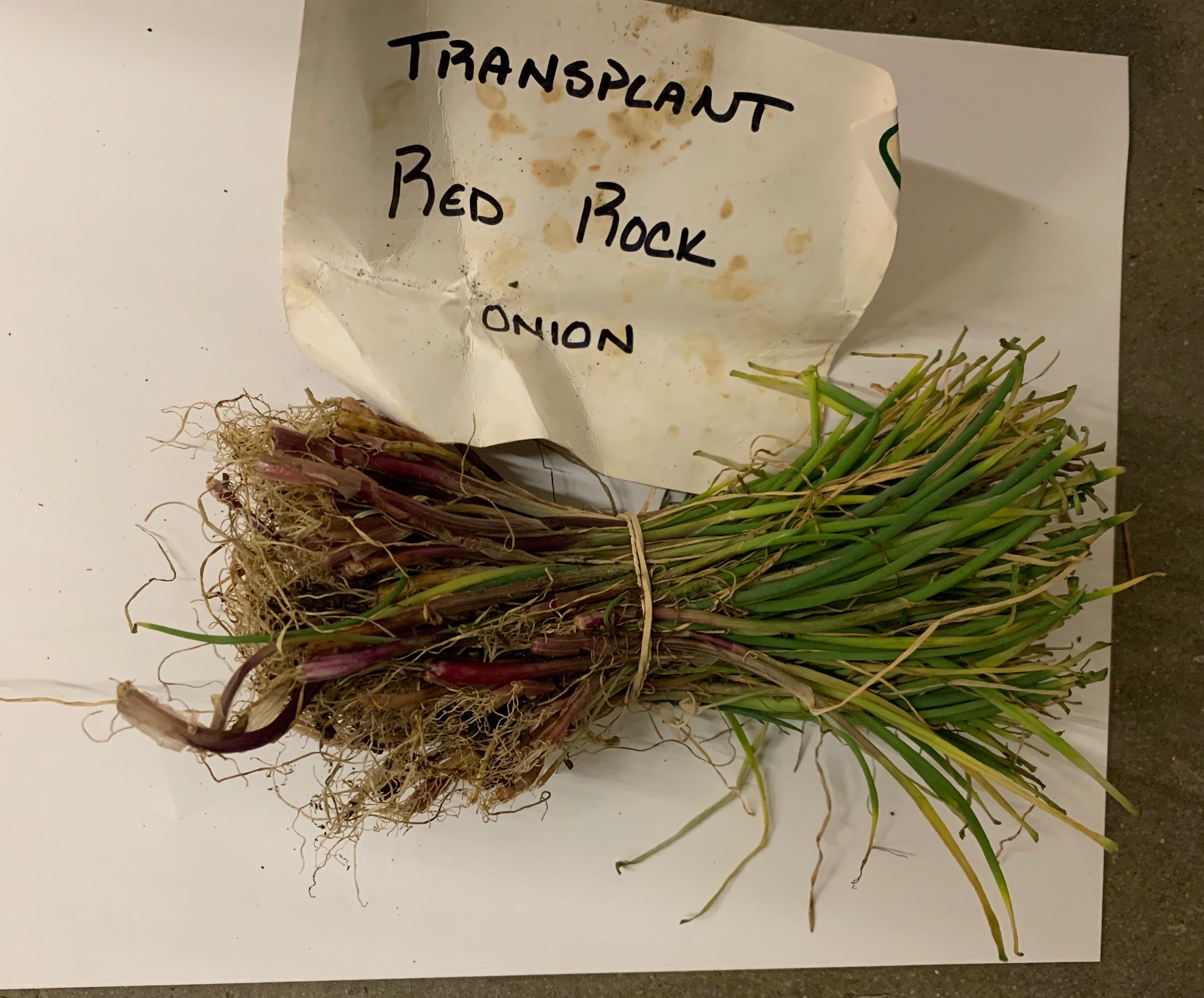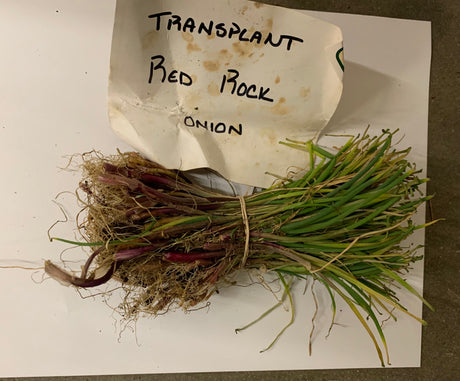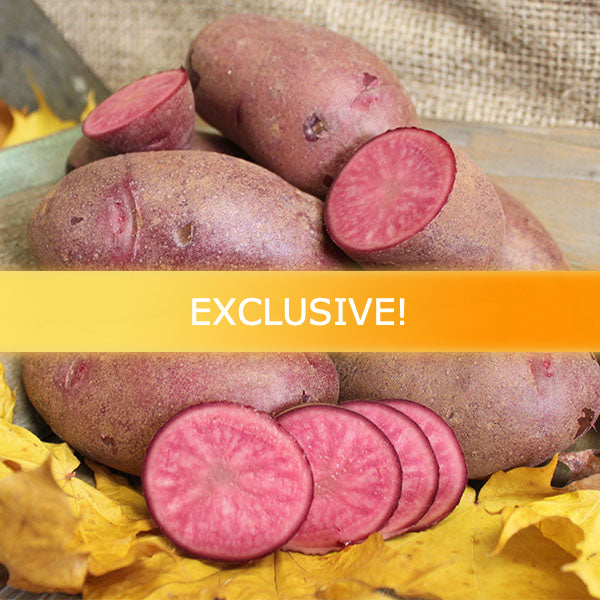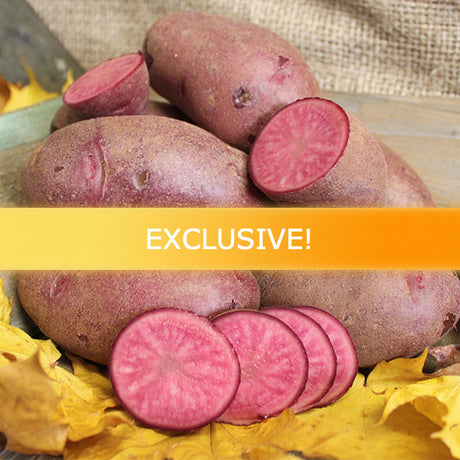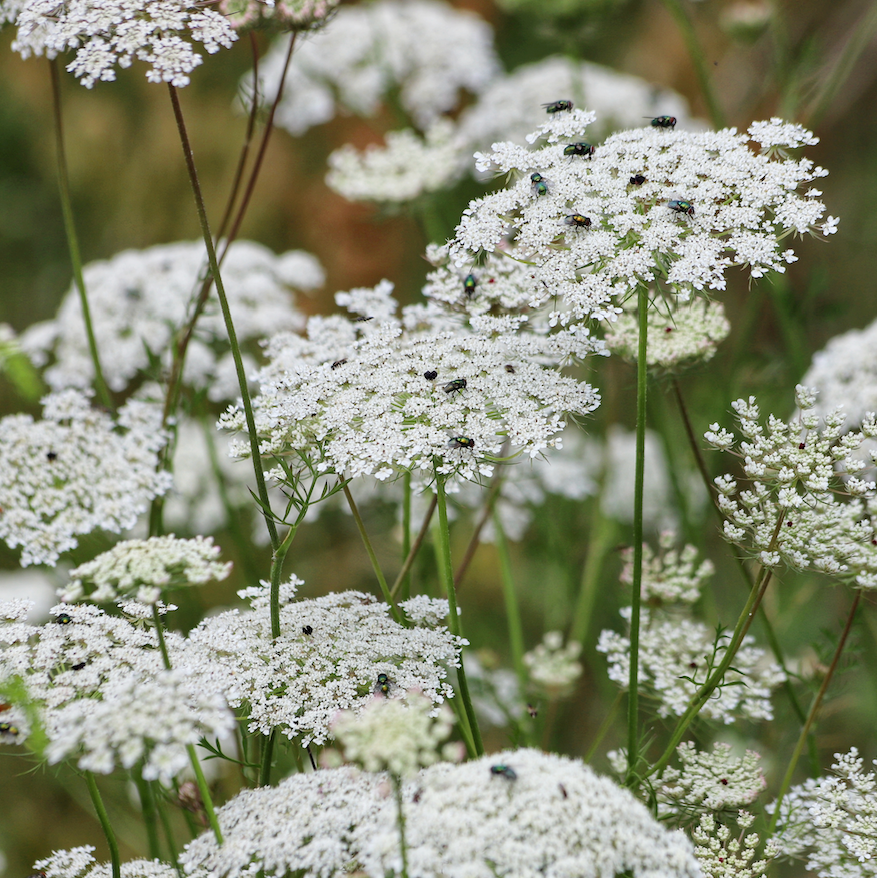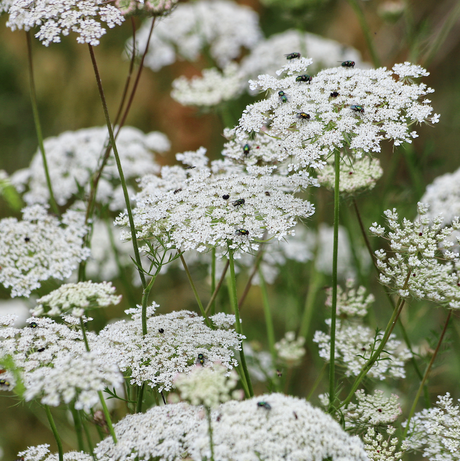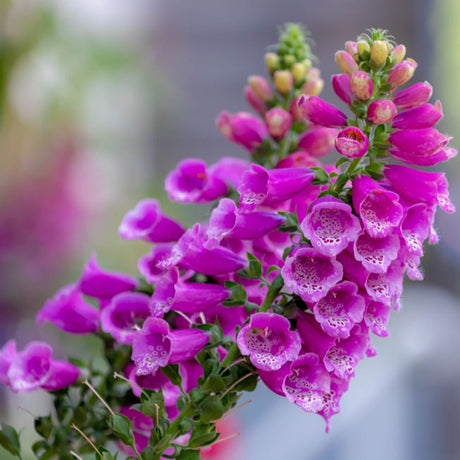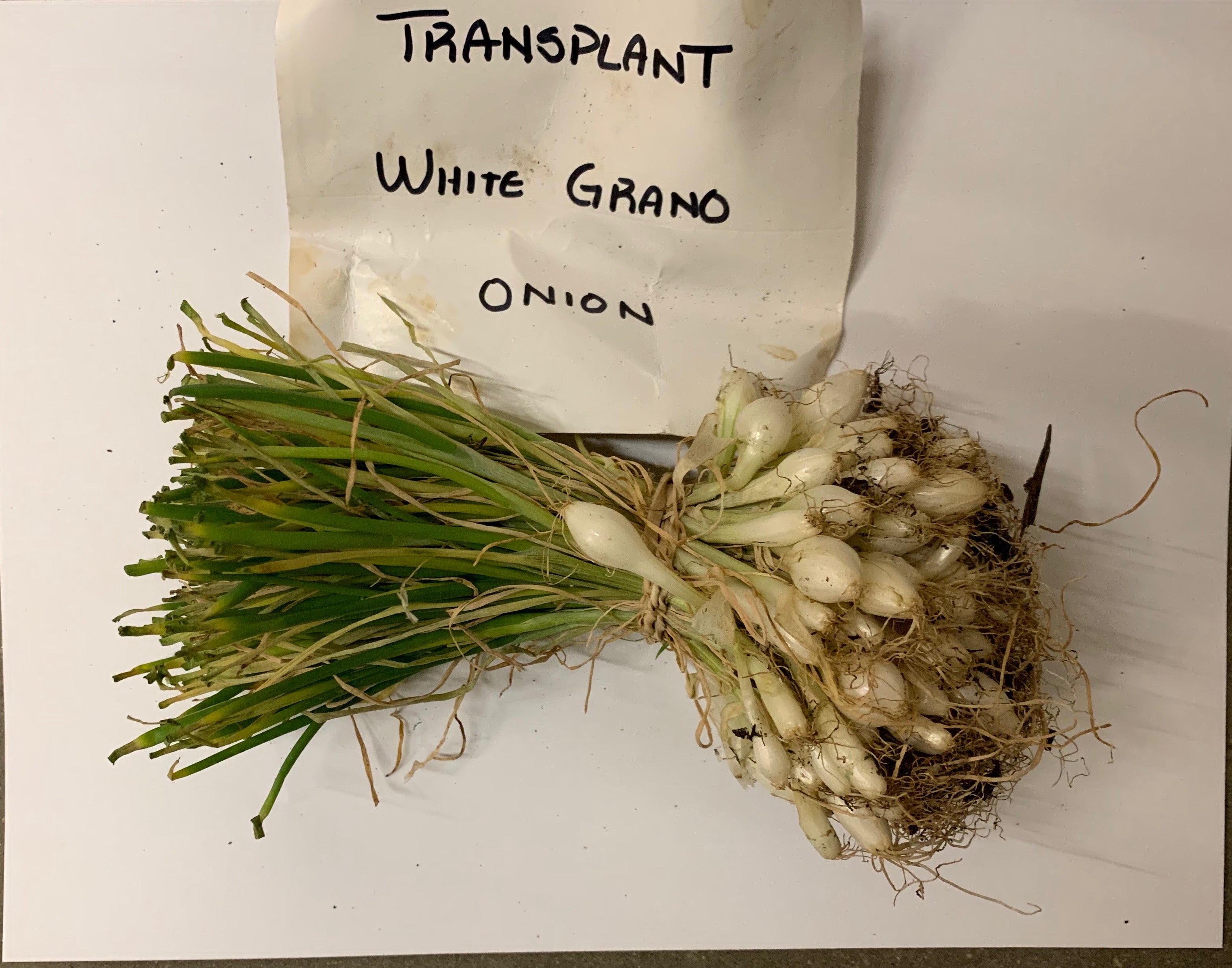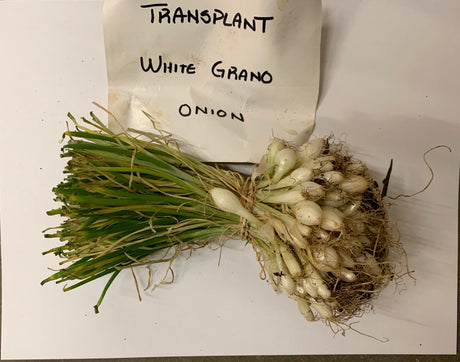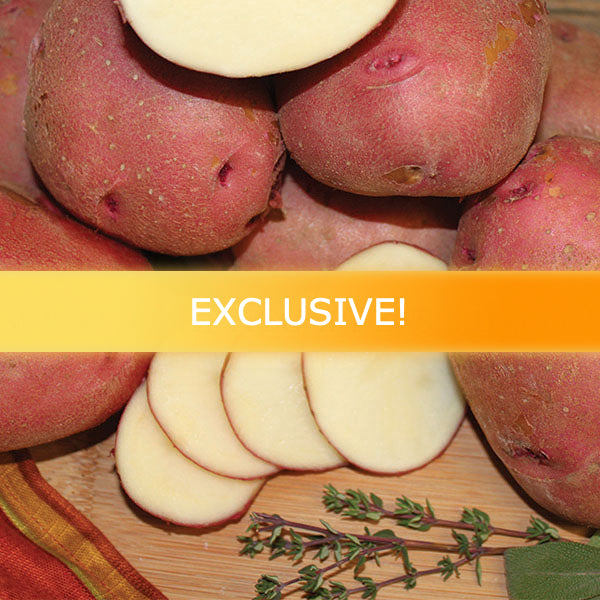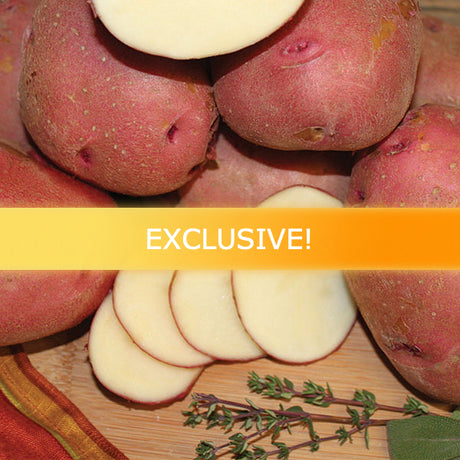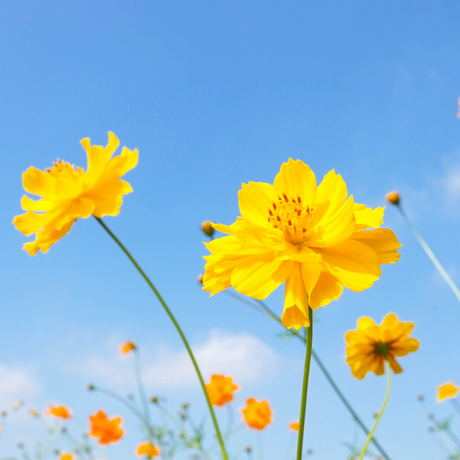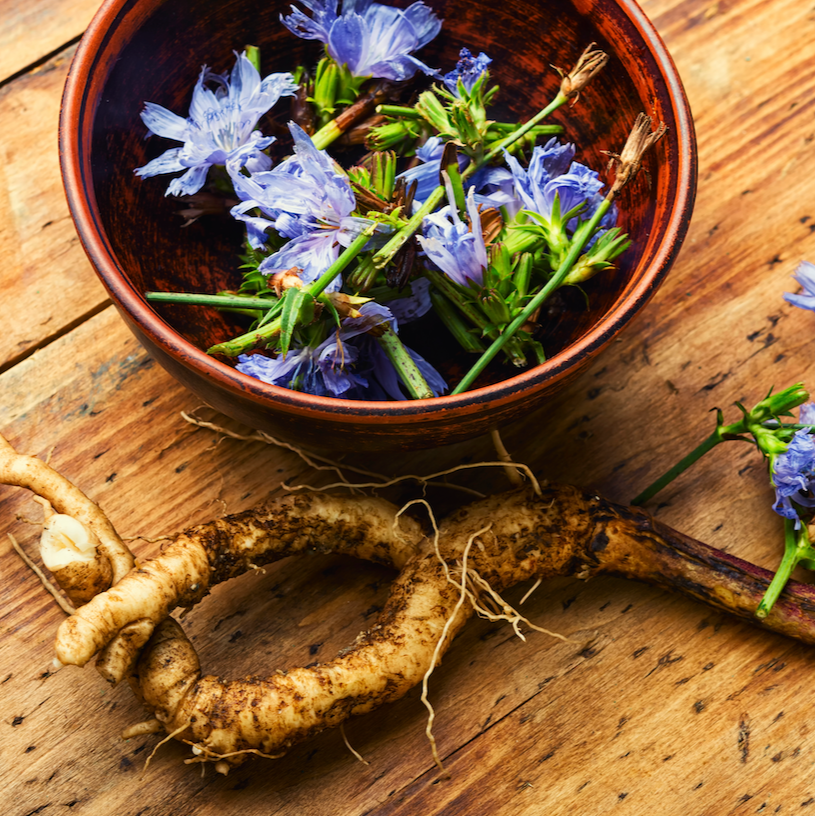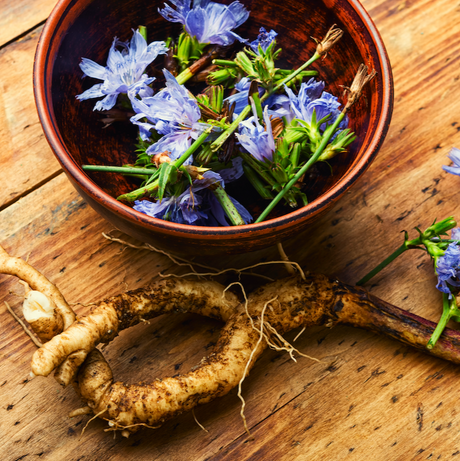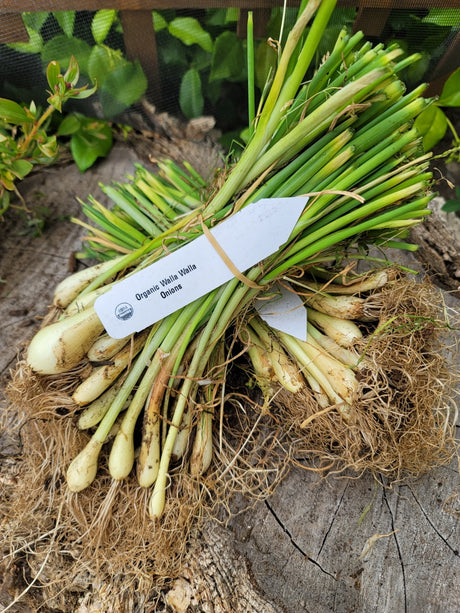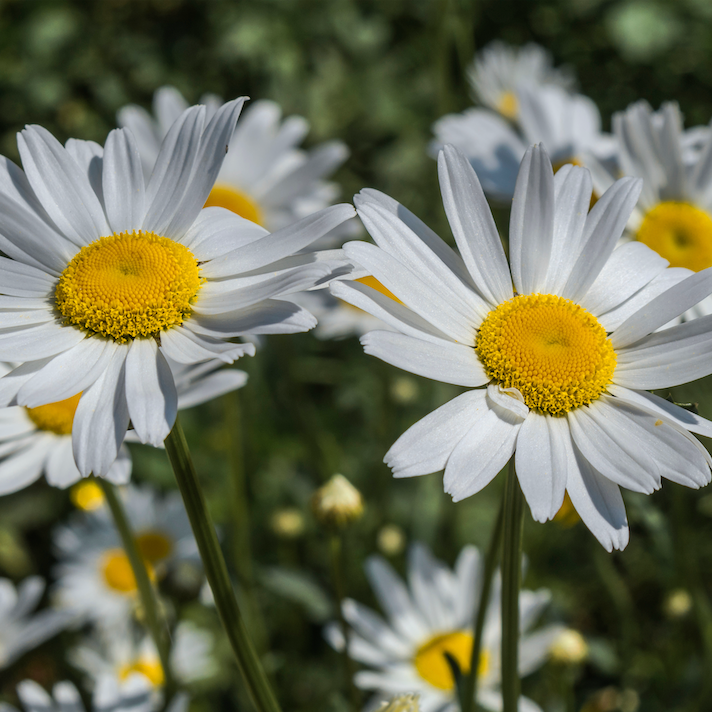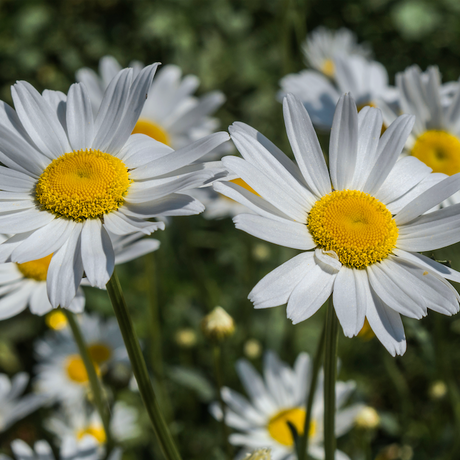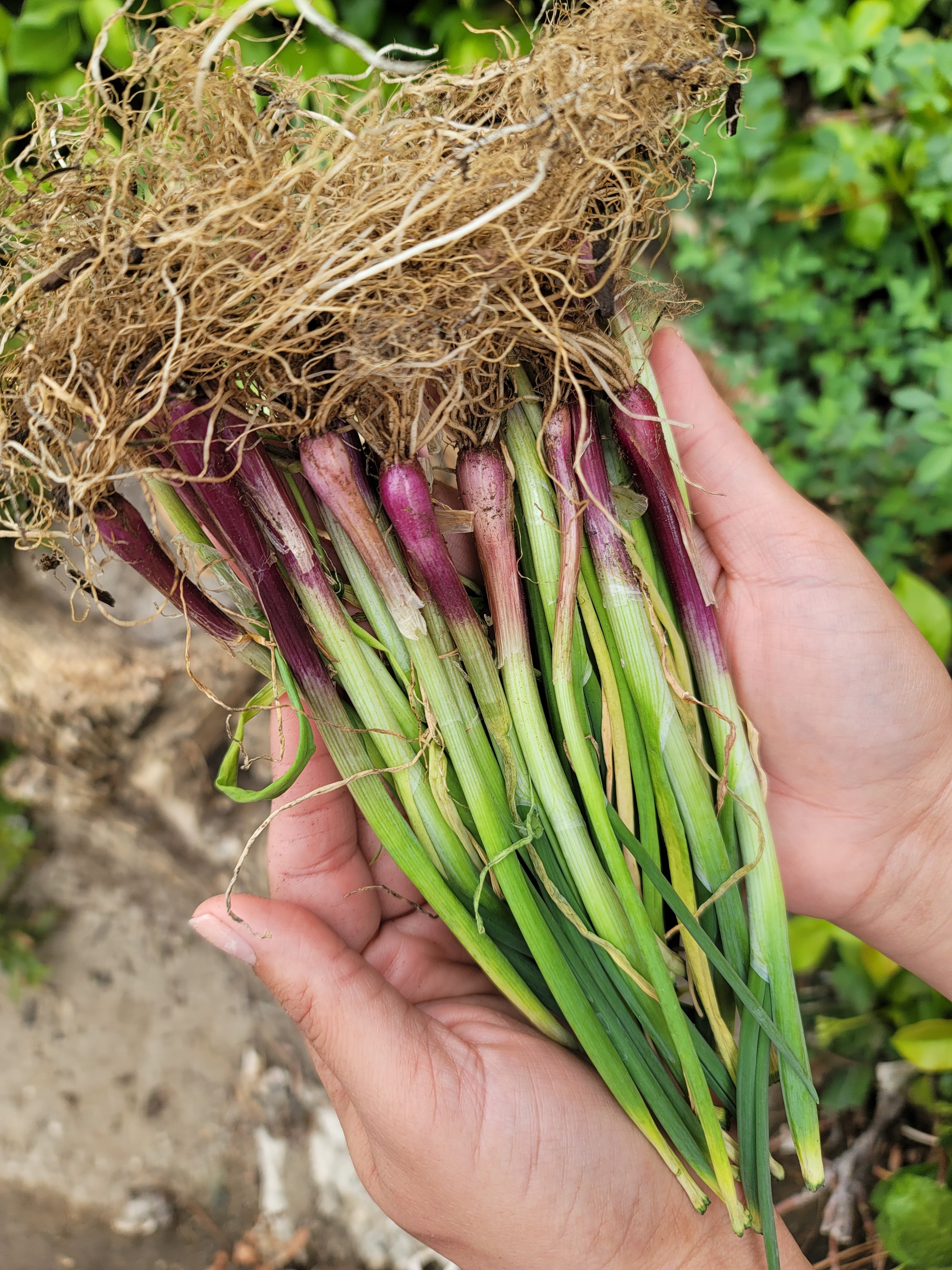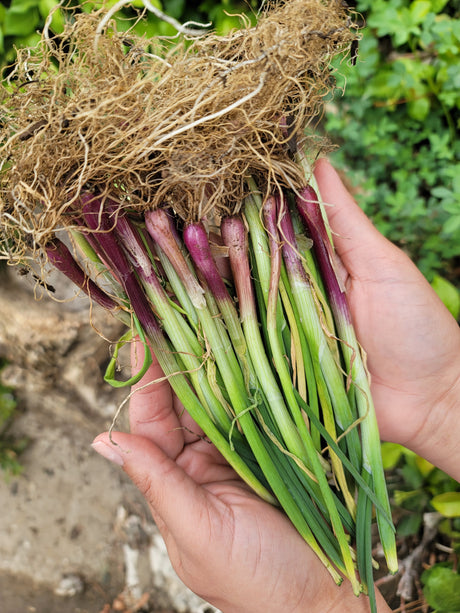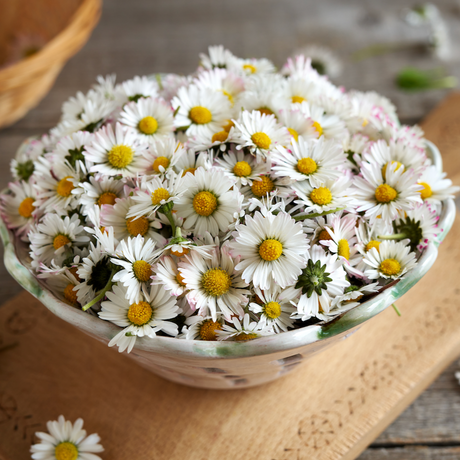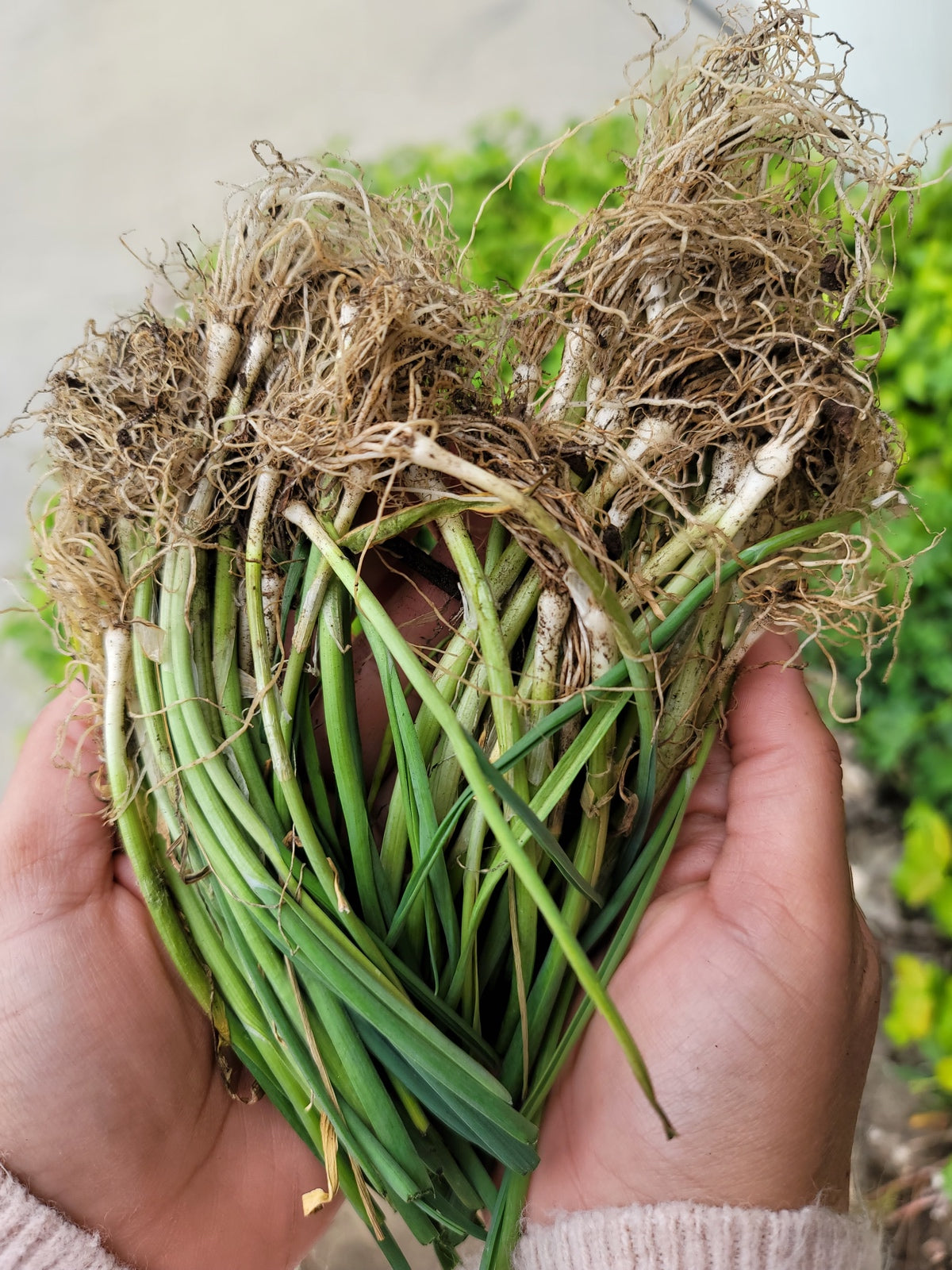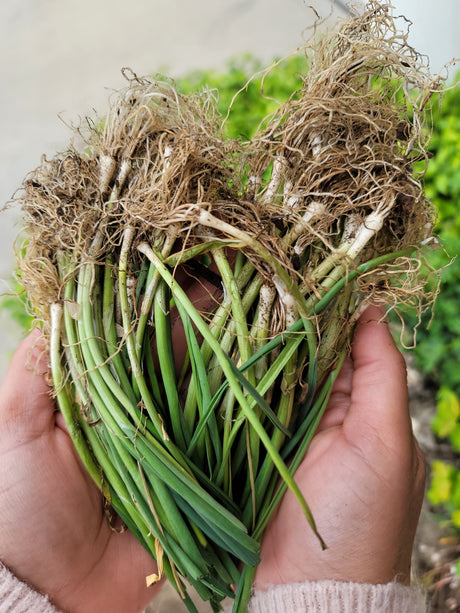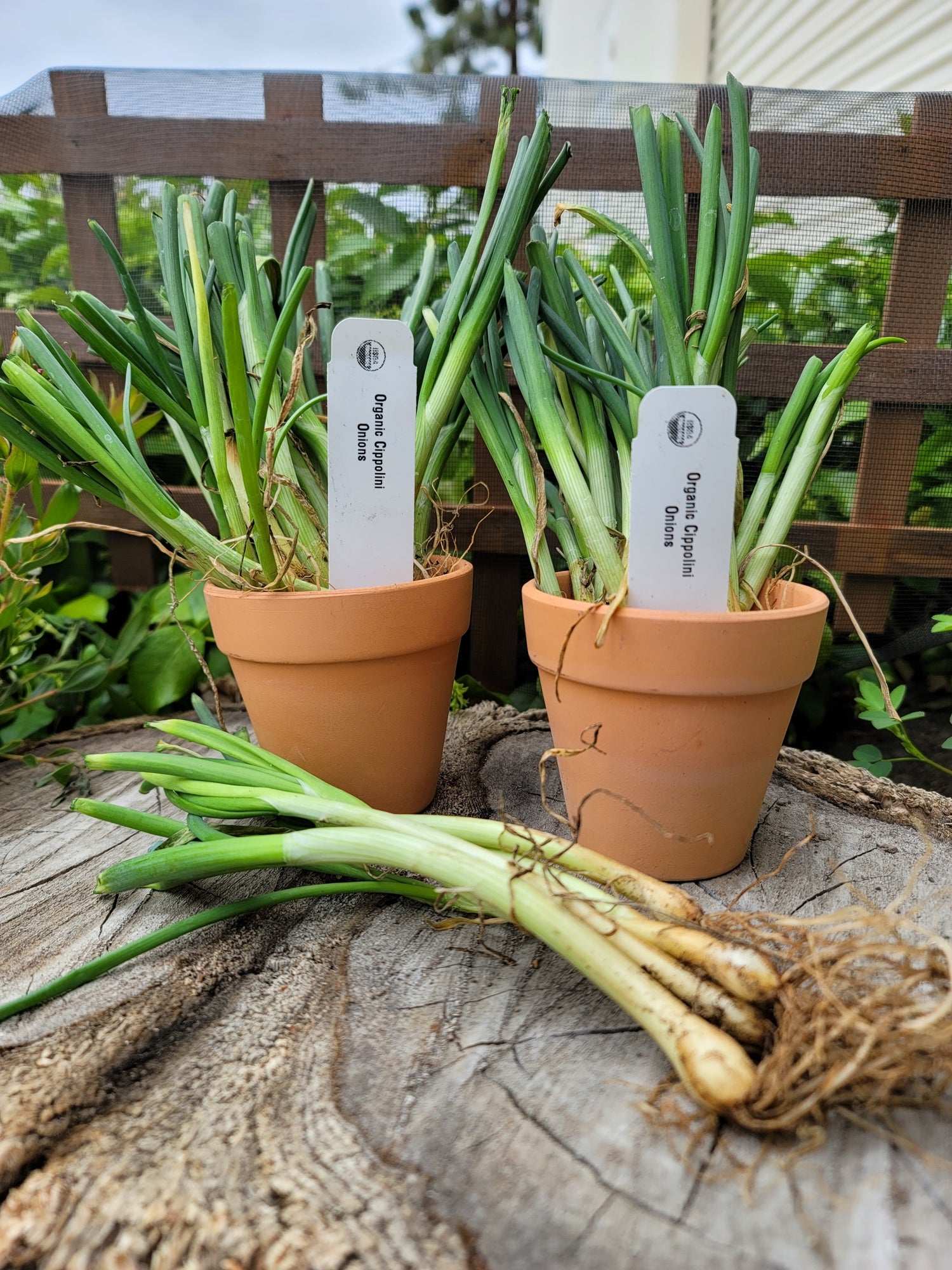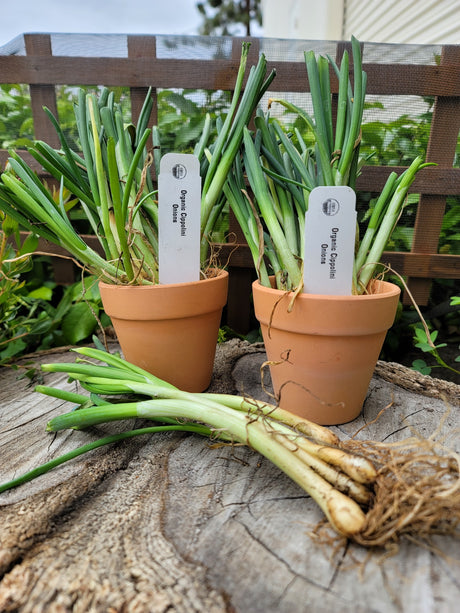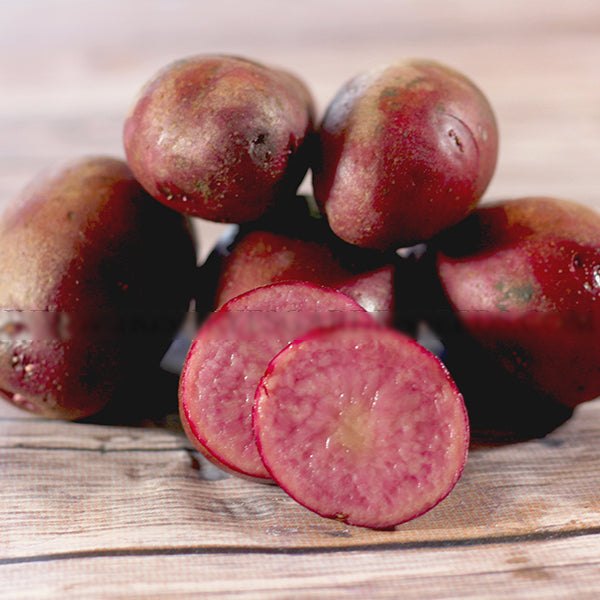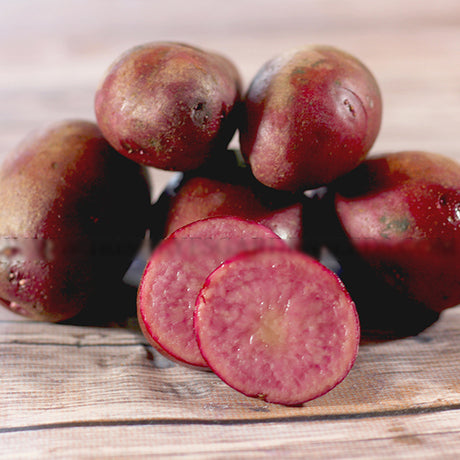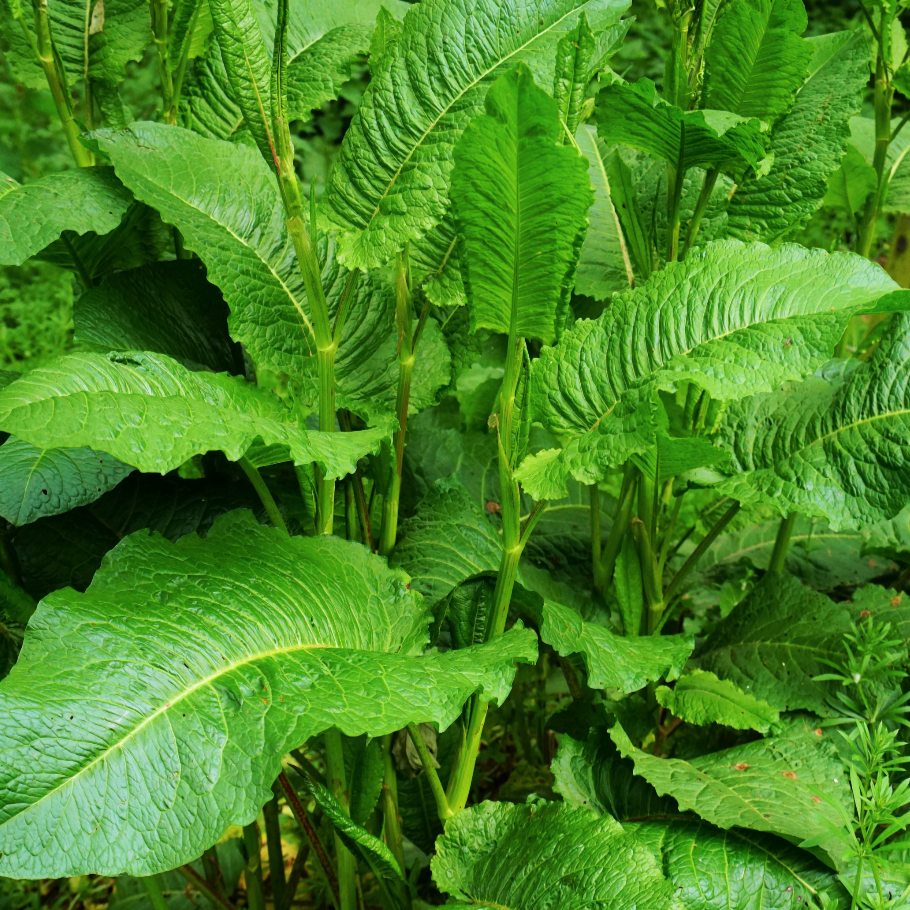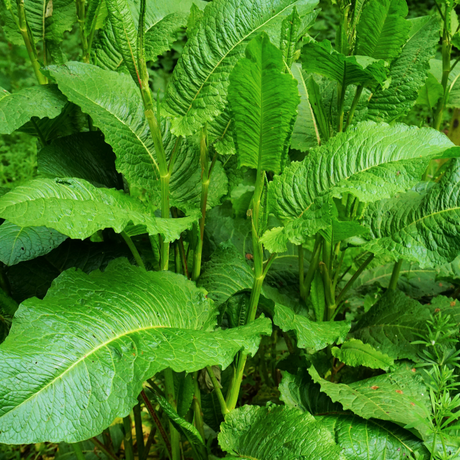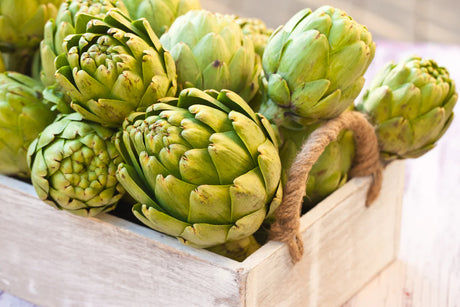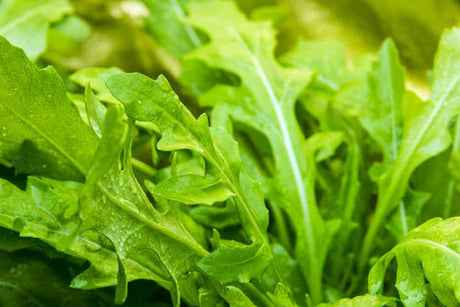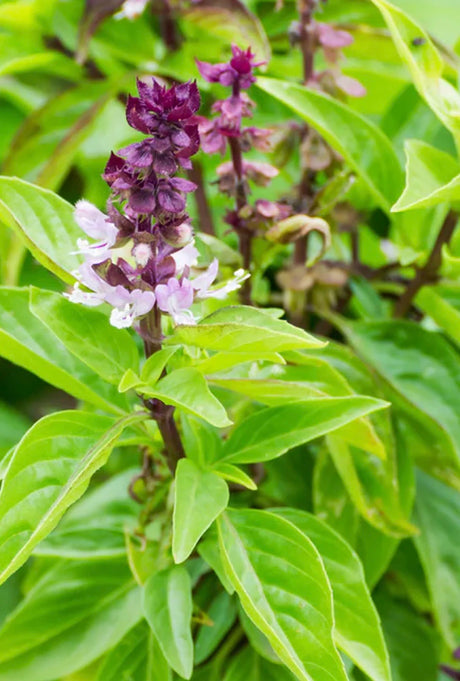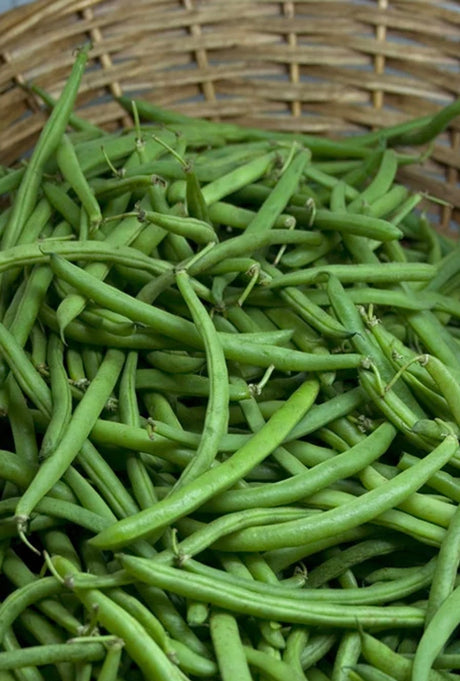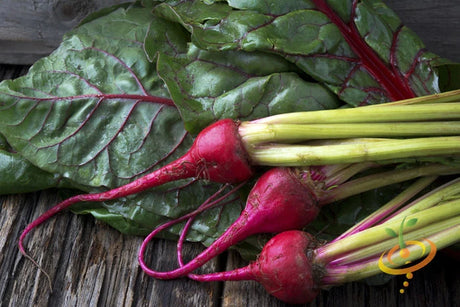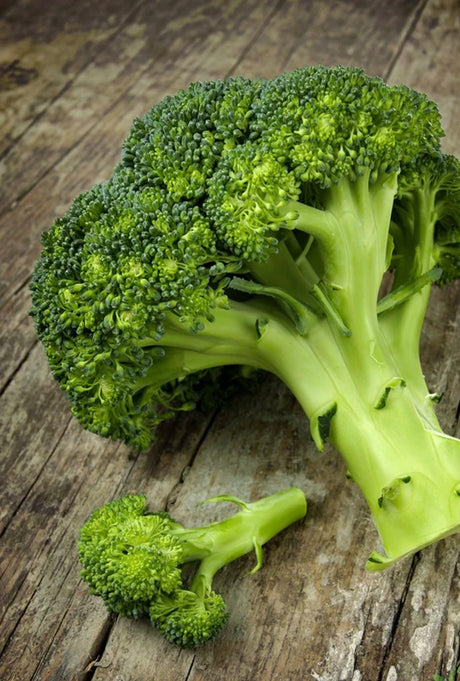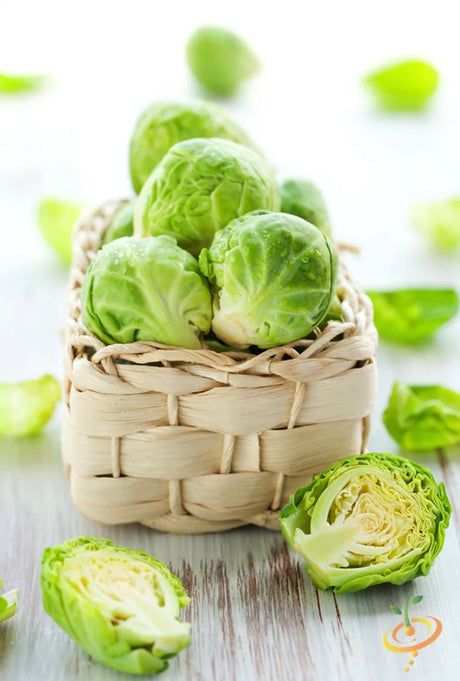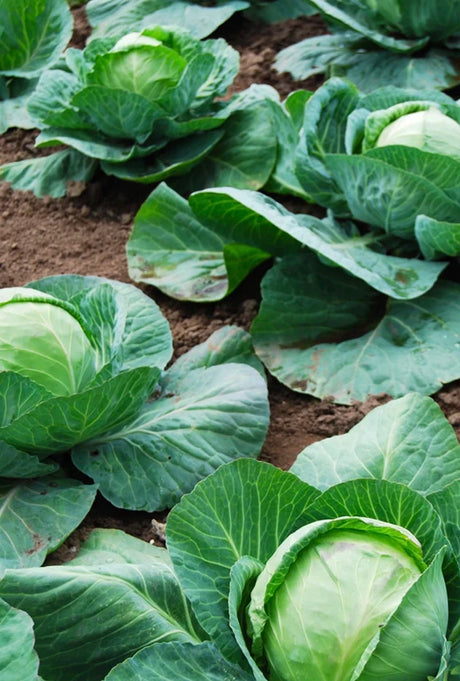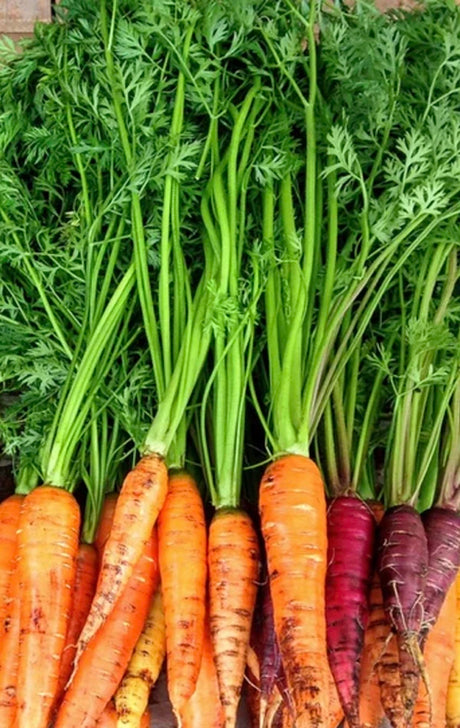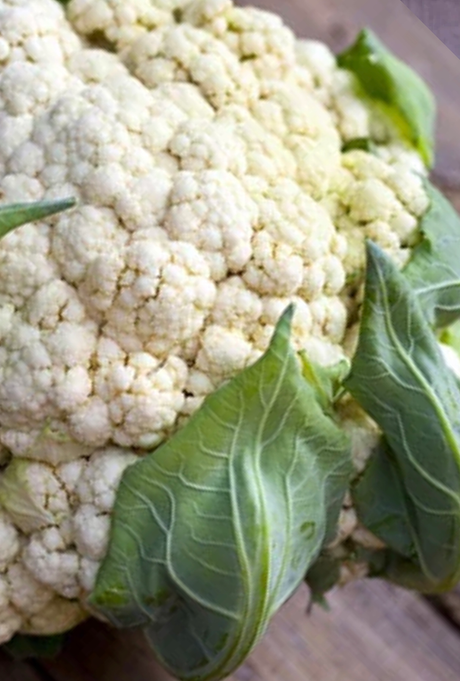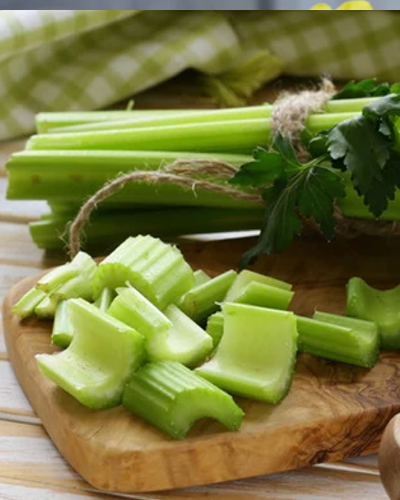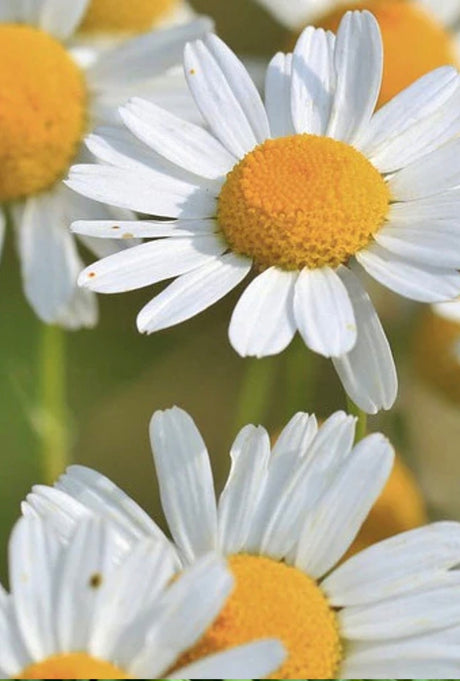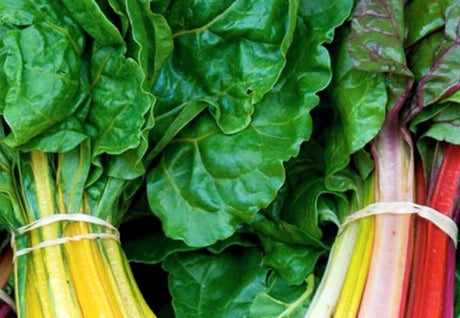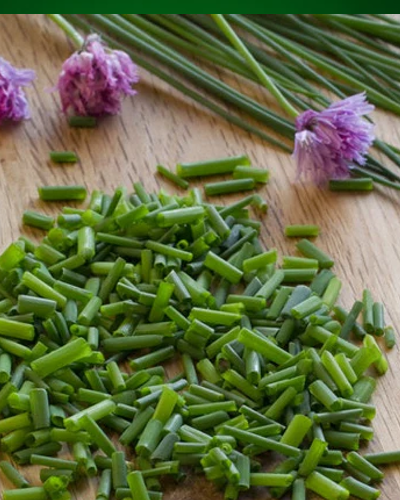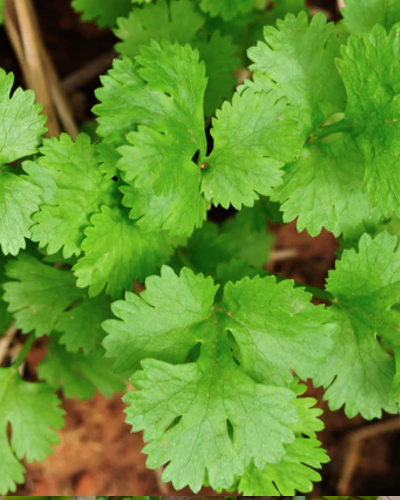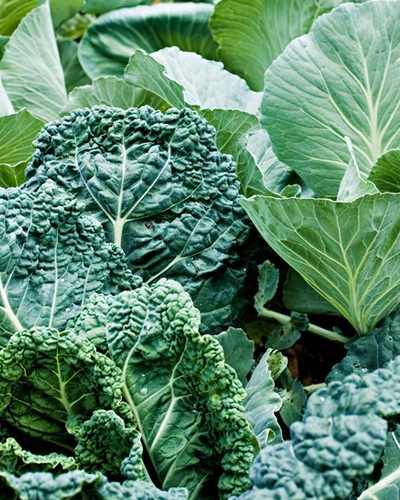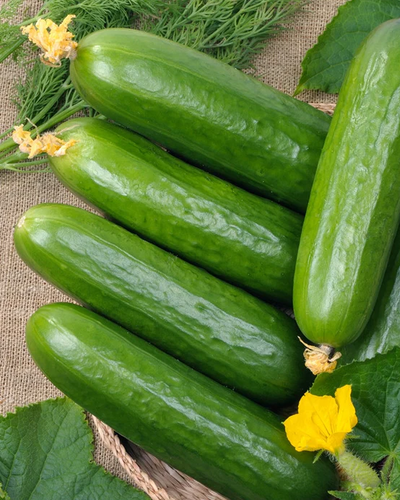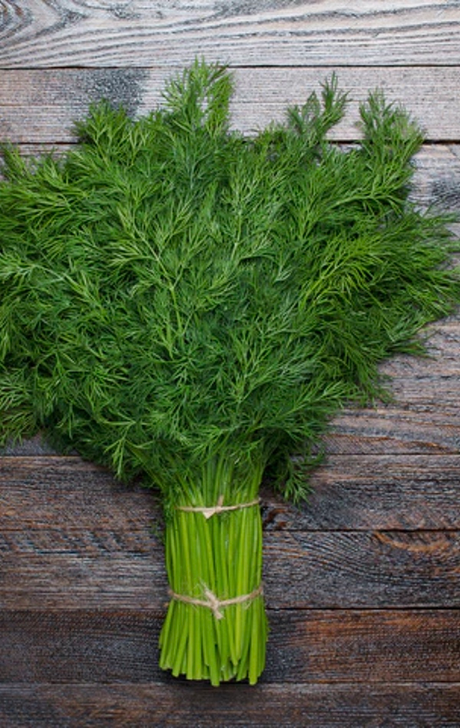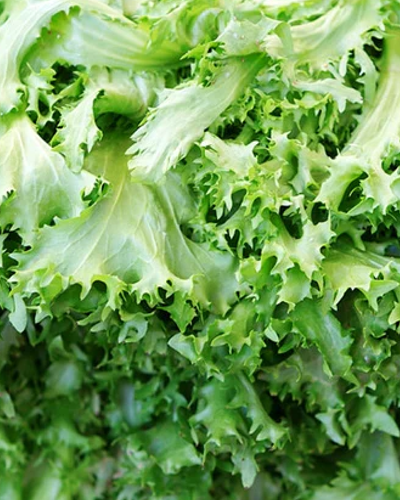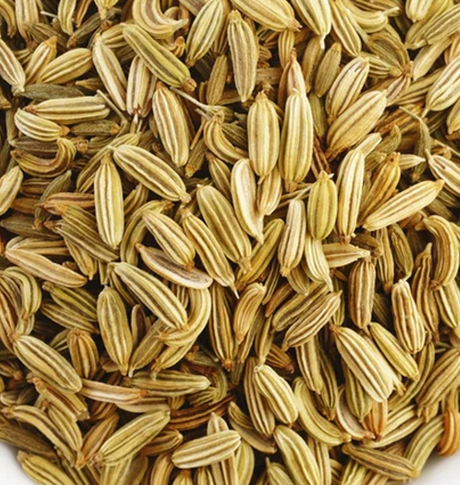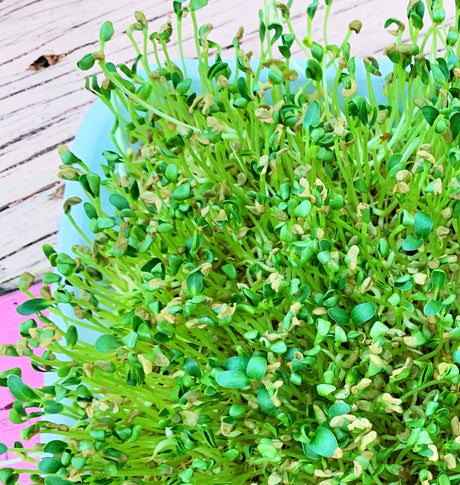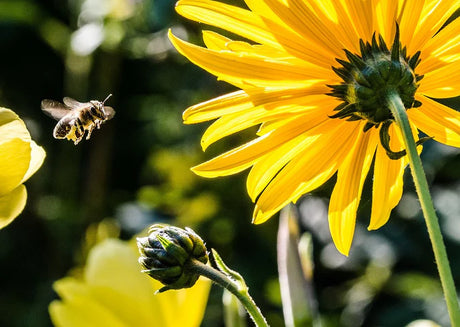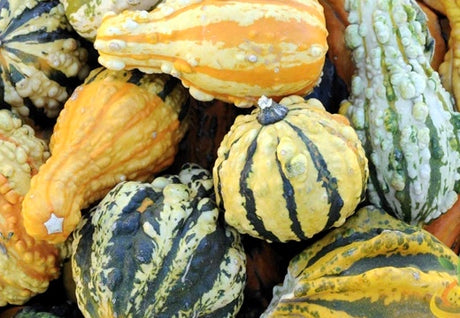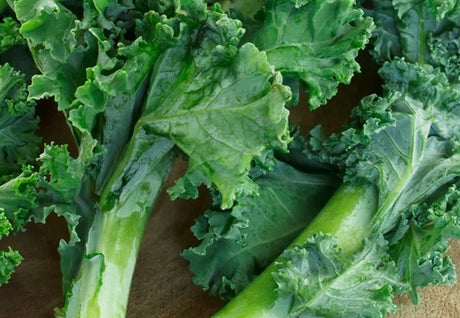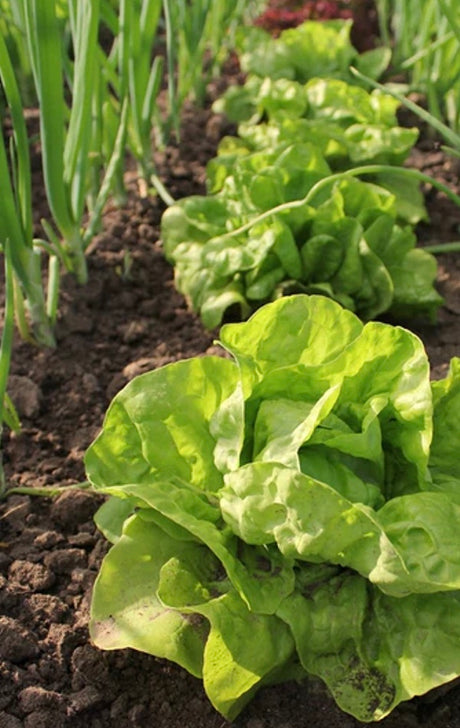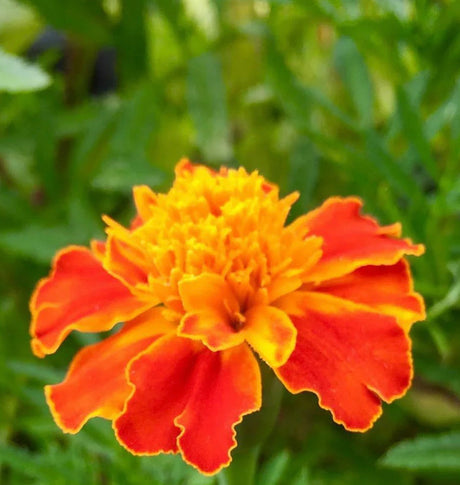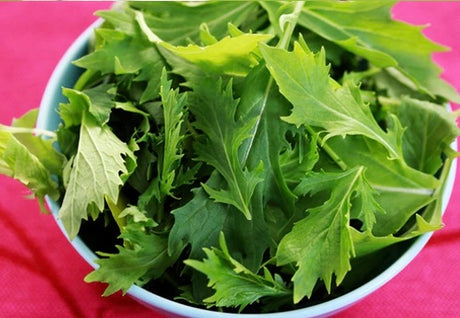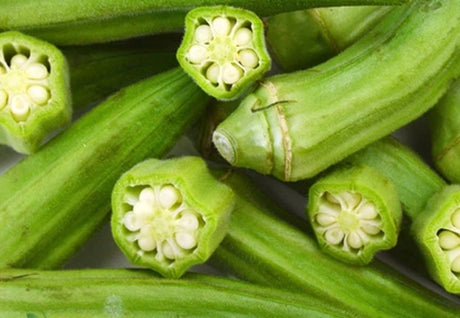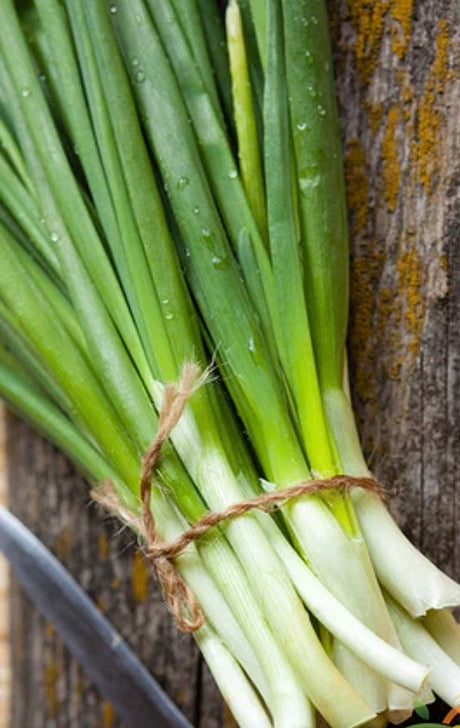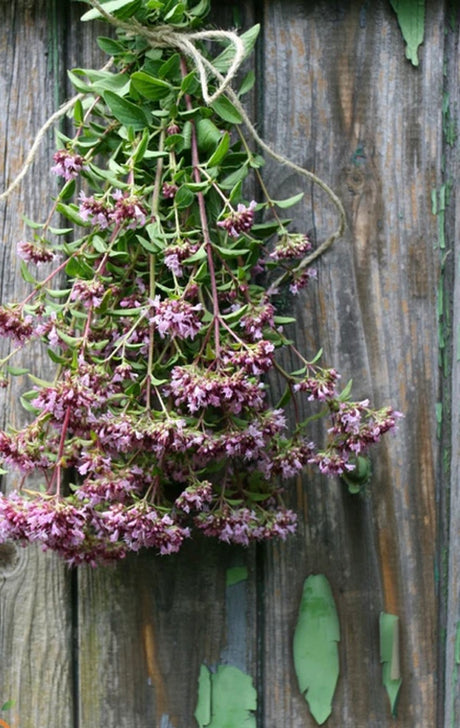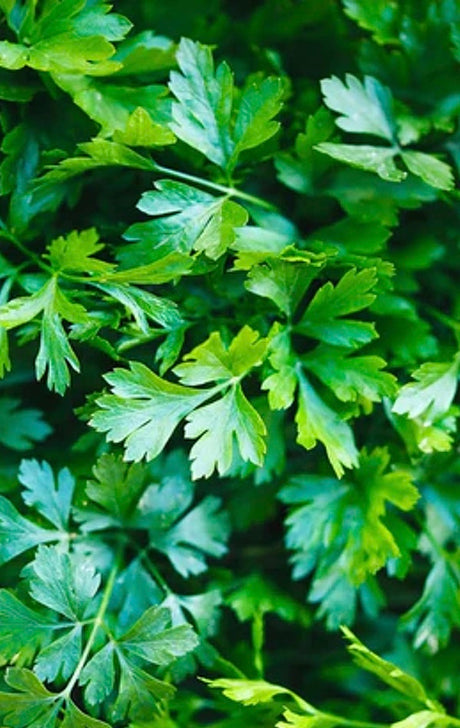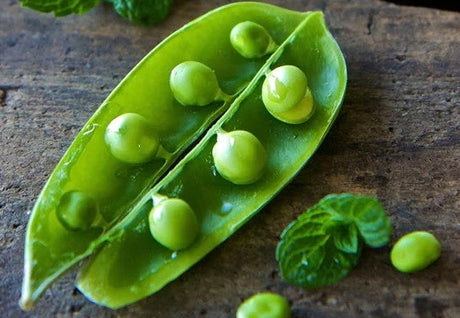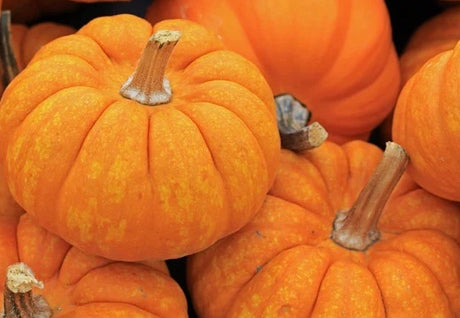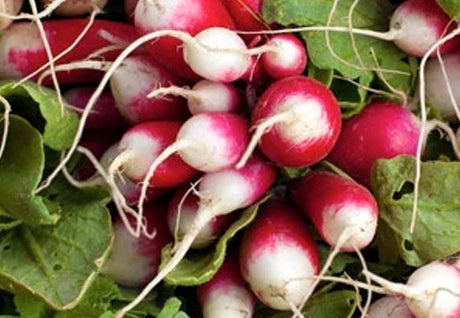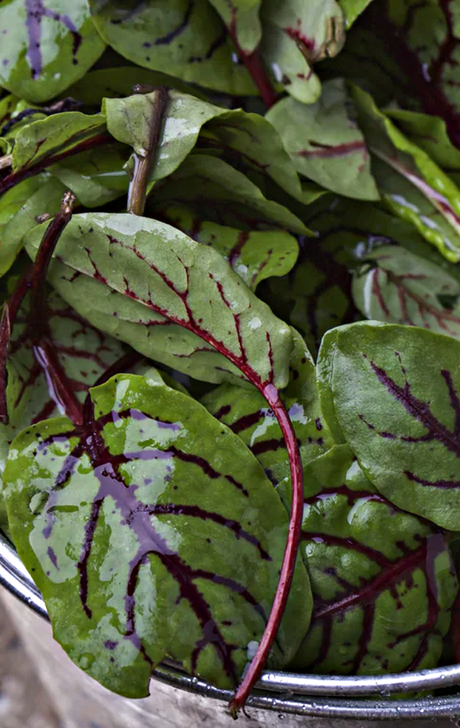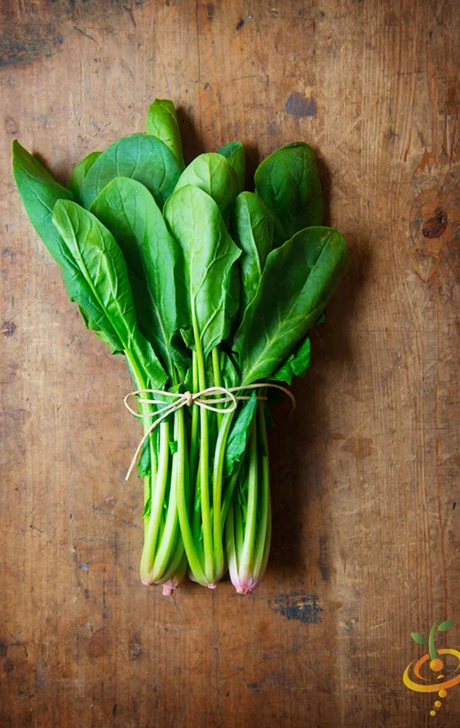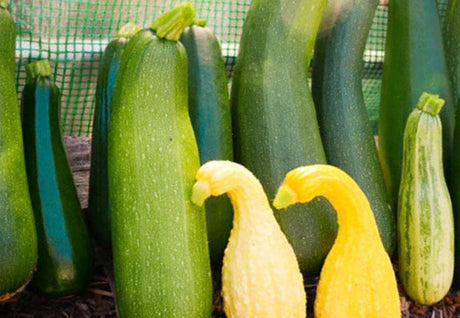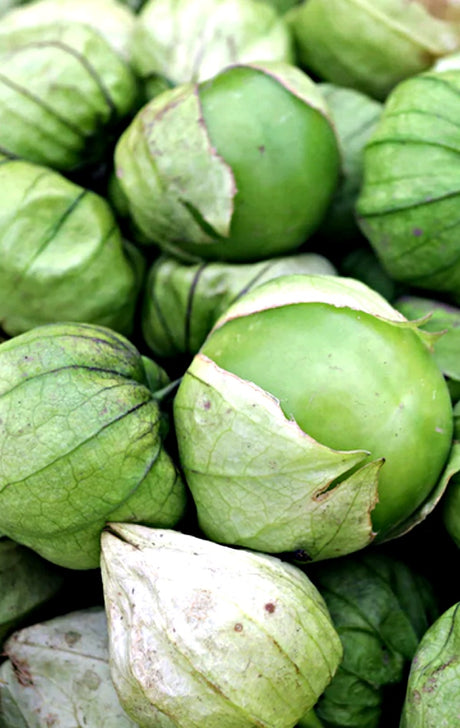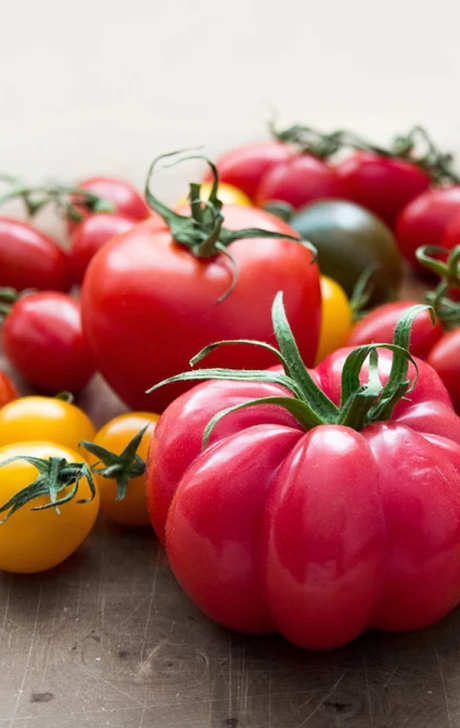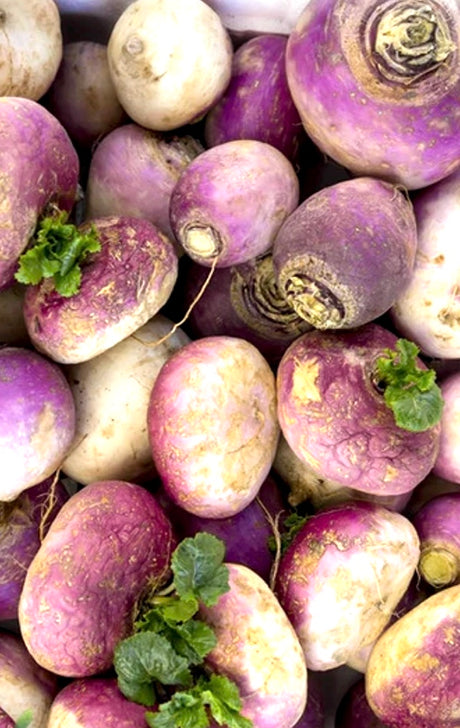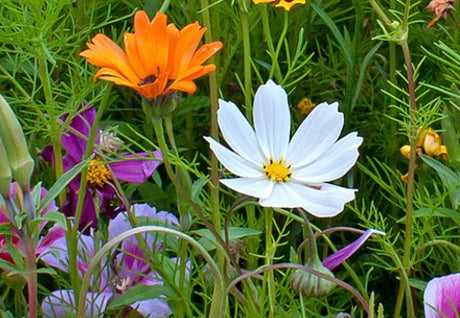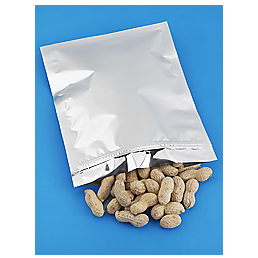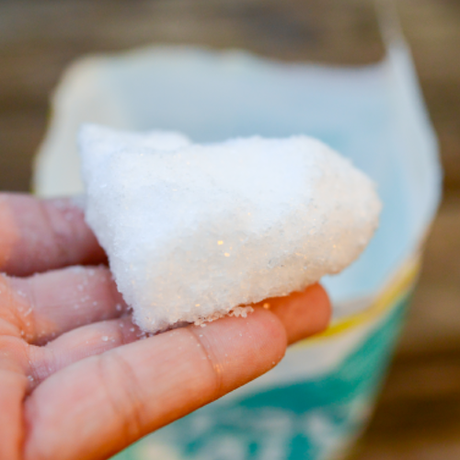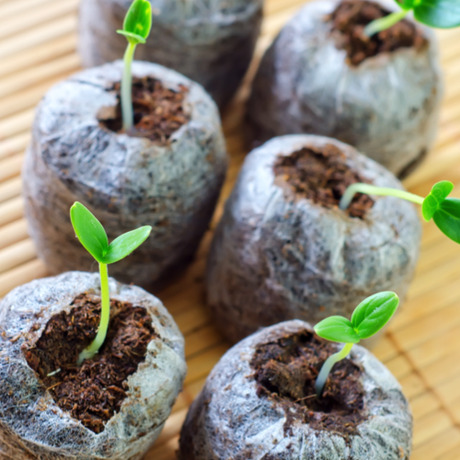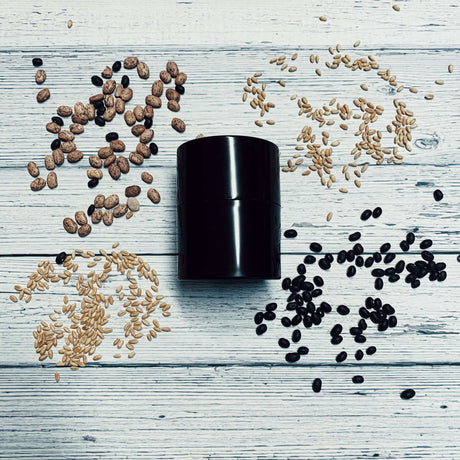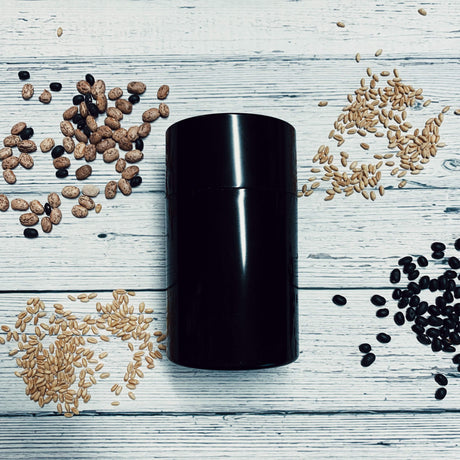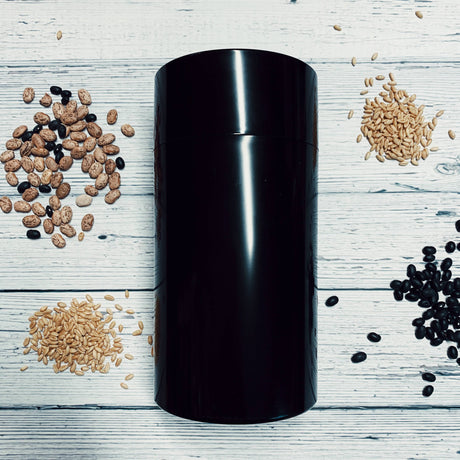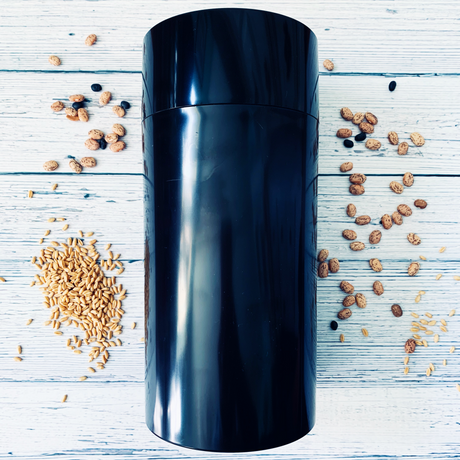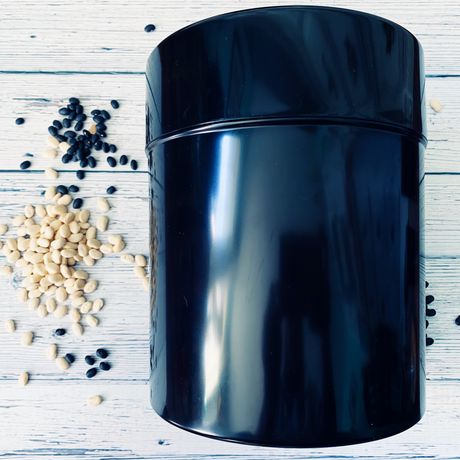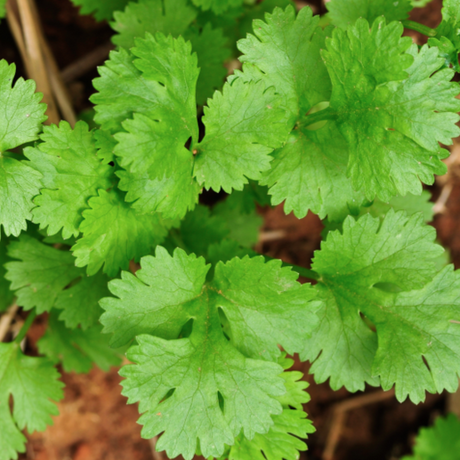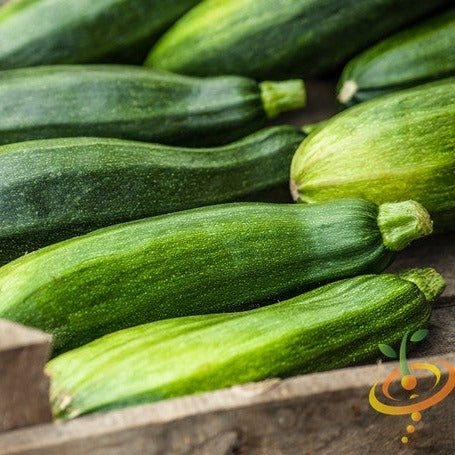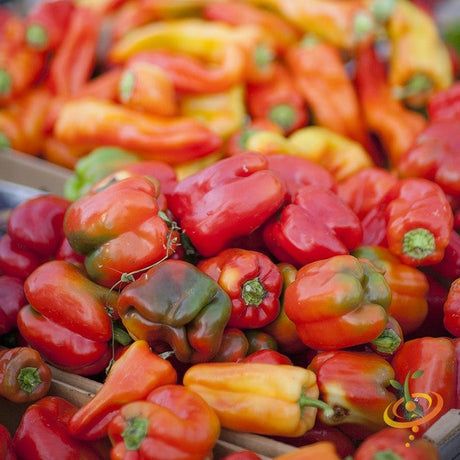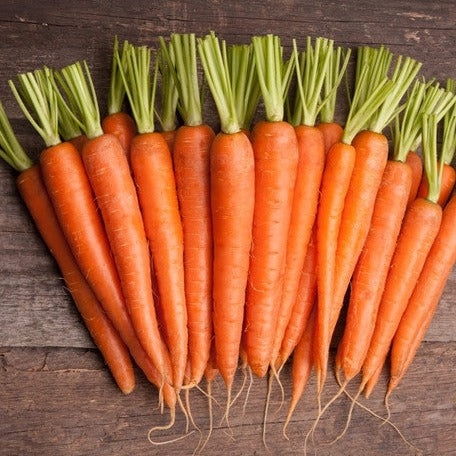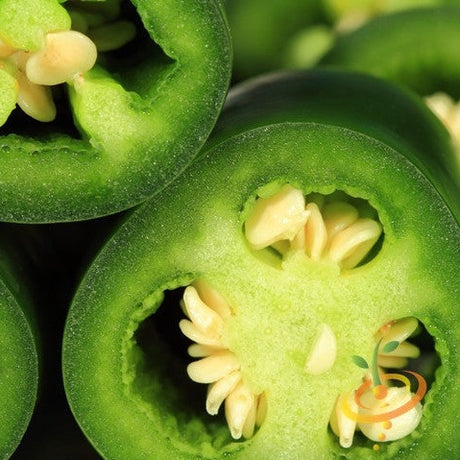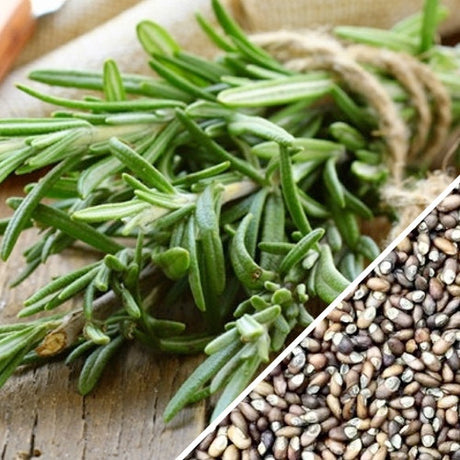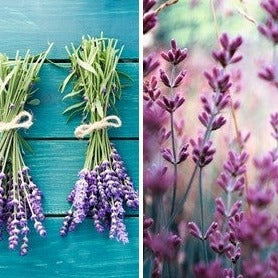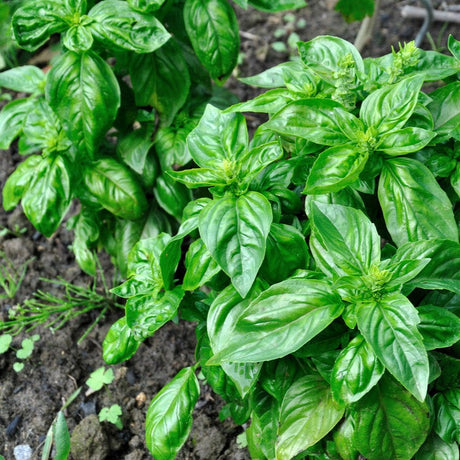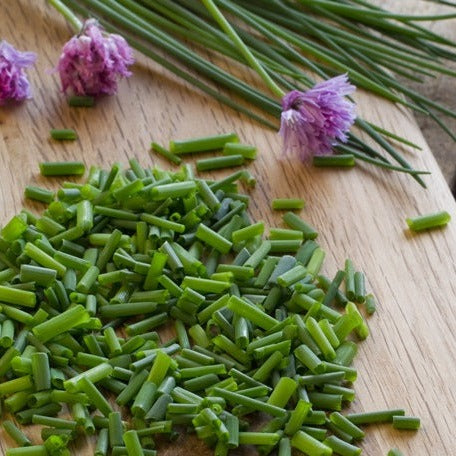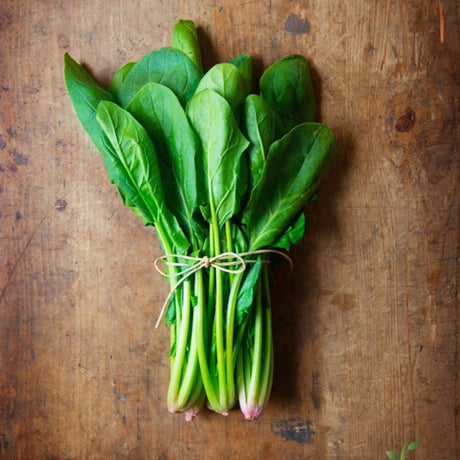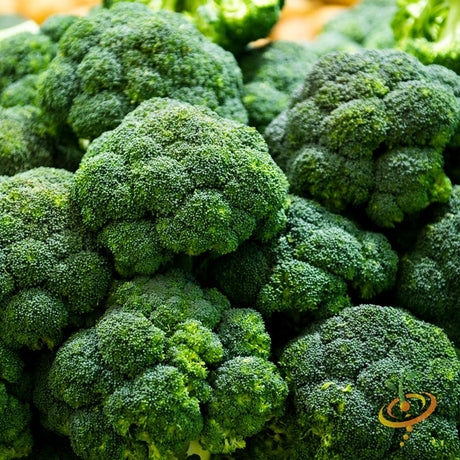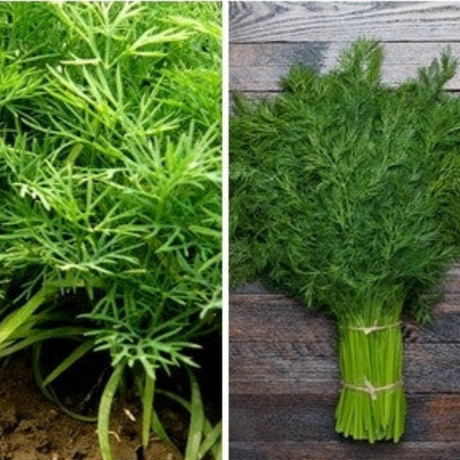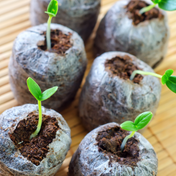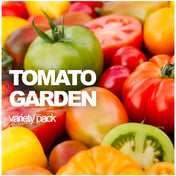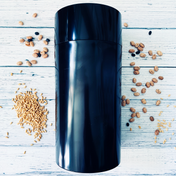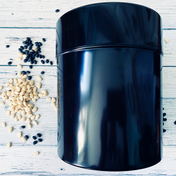Potato (Mid-Season) - All Red (Organic/Heirloom)
From $999 USDUnit price /UnavailableDescription
DETAILS
-
Mid-season 80-90 days to maturity.
-
These medium to extra-large tubers have smooth, brilliant red skin with medium shallow eyes.
-
Pink swirled flesh that retains its color after cooking.
-
Like most reds, this variety is good for steaming or boiling.
-
Makes an attractive and unique potato salad.
NOTE: We do not use chemicals to prevent our potatoes from sprouting. So the seed potatoes you order may have already begun to sprout when they arrive. This is okay-in fact some consider it desirable.
-
Baby's Breath (Gypsophila) Flowers
From $399 USDUnit price /UnavailableDescription
Baby's Breath, scientifically known as Gypsophila, is a perennial flowering plant that is widely appreciated for its delicate, airy appearance and versatility in garden settings. This plant is characterized by its small, white or pink flowers that bloom in clusters, creating a cloud-like effect that can enhance the aesthetic appeal of any garden.
It is important to note that while Baby's Breath is generally pest-resistant, it can occasionally be affected by aphids or spider mites. Regular monitoring and appropriate cultural practices can help mitigate these issues. Furthermore, the plant is not considered invasive, making it a safe addition to most garden environments.
In summary, Baby's Breath is a valuable addition to any garden, offering both visual appeal and practical benefits. Its ease of care, drought tolerance, and compatibility with other plants make it a preferred choice for gardeners seeking to create a beautiful and sustainable landscape.
Zinnia, Cherry Queen Flowers seeds
From $299 USDUnit price /UnavailableDescription
The Cherry Queen Zinnia (Zinnia elegans) is a vibrant and popular flowering plant known for its striking appearance and ease of cultivation. This annual flower is characterized by its large, daisy-like blooms that can reach up to 4 inches in diameter. The Cherry Queen variety showcases a rich, cherry-red color that can add a bold splash to any garden setting.
These flowers thrive in full sun and are well-suited for USDA hardiness zones 3 to 10. They prefer well-drained soil and can tolerate drought conditions once established, making them an excellent choice for gardeners looking for low-maintenance options. Zinnias are also known for their ability to attract pollinators, such as bees and butterflies, contributing to the overall health of the garden ecosystem.
In terms of growth, Cherry Queen Zinnias typically reach a height of 24 to 36 inches. They can be planted directly in the garden after the last frost or started indoors and transplanted later. The seeds germinate quickly, usually within 7 to 10 days, and the plants bloom from mid-summer until the first frost, providing a long-lasting display of color.
Cherry Queen Zinnias are also valued for their cut flower potential. The sturdy stems and vibrant blooms make them ideal for floral arrangements, and they can last up to a week in a vase when properly cared for. This versatility makes them a favorite among both home gardeners and professional florists.
In summary, the Cherry Queen Zinnia is an excellent addition to any garden. With its stunning color, ease of care, and ability to attract beneficial insects, it not only enhances the aesthetic appeal of the garden but also supports biodiversity. For optimal growth, ensure they are planted in a sunny location with well-drained soil, and enjoy the vibrant blooms throughout the growing season.
SEED PLANTING TIPS
- Botanical name: Zinnia elegans
- Hardiness zones: 2-11
- Planting season: Spring, summer
- Days to maturity: 60-70 days
- Cold stratify: No
- Depth to plant seeds: 1/4" deep
- Spacing between plants: 12"-18" apart
- Days to germinate (sprout): 5-7 days
- Germination soil temps: 70F-75F
- Soil types: Sandy, loamy, rich, moist, well-drained
- Soil pH: 6.0-7.0
- Water needs: Average
- Sun needs: Full sun
- Frost tolerant: No
- Drought tolerant: Yes
- Deer resistant: Yes
Potato (Mid-Season) - Red La Soda (Organic/Heirloom)
From $999 USDUnit price /UnavailableDescription
DETAIL
-
This potato with smooth red skin, deep eyes and white flesh is excellent for boiling and making potato salads.
-
Possibly the best storing red; it keeps well into June. It tolerates high temperatures but is susceptible to disease.
-
Excellent harvests.
-
This variety was developed especially for Southern growers, but can be good in the North and South for first-early market potatoes.
NOTE: We do not use chemicals to prevent our potatoes from sprouting. So the seed potatoes you order may have already begun to sprout when they arrive. This is okay-in fact some consider it desirable.
-
- From $299 USDUnit price /Unavailable
Description
The Bean Taylor Dwarf plant, scientifically known as Phaseolus vulgaris, is a popular choice among gardeners due to its compact size and high yield. This variety is particularly well-suited for small gardens or container gardening, making it accessible for urban gardeners and those with limited space.
One of the defining characteristics of the Bean Taylor Dwarf is its growth habit. Typically, this plant reaches a height of approximately 18 to 24 inches, which allows for easy harvesting without the need for extensive bending or stretching. The dwarf nature of this plant also means that it can be planted closer together than taller varieties, maximizing space efficiency in the garden.
In terms of productivity, the Bean Taylor Dwarf is known for its prolific output. Under optimal growing conditions, a single plant can produce an impressive yield of beans, often exceeding 1 pound per plant. This makes it an excellent choice for home gardeners looking to supplement their vegetable intake with fresh produce.
The growing requirements for the Bean Taylor Dwarf are relatively straightforward. It thrives in well-drained soil with a pH level between 6.0 and 7.0. Full sun exposure is essential, as this plant requires at least 6 to 8 hours of sunlight daily to achieve optimal growth. Additionally, regular watering is crucial, particularly during dry spells, as beans are sensitive to drought conditions.
From a nutritional standpoint, beans are an excellent source of protein, fiber, and essential vitamins and minerals. The Bean Taylor Dwarf, like other bean varieties, contributes significantly to a balanced diet. It is particularly rich in folate, iron, and magnesium, making it a valuable addition to any meal plan.
When considering pest management, the Bean Taylor Dwarf may be susceptible to common garden pests such as aphids and spider mites. Implementing integrated pest management strategies, including the use of beneficial insects and organic pesticides, can help mitigate these issues while promoting a healthy garden ecosystem.
In conclusion, the Bean Taylor Dwarf plant is a versatile and productive option for gardeners seeking to grow their own food. Its compact size, high yield, and nutritional benefits make it an excellent choice for both novice and experienced gardeners alike. By understanding its growing requirements and potential challenges, gardeners can successfully cultivate this plant and enjoy the fruits of their labor.
Click here to view our full Bean grow guide
Good companion plants: Cucumber, Pea, Rosemary, Thyme, Tomato
Columbine, McKana Giants Mix Flowers
From $399 USDUnit price /UnavailableDescription
The Columbine McKana's plant, scientifically known as Aquilegia caerulea, is a perennial flowering plant that belongs to the Ranunculaceae family. This plant is renowned for its distinctive, bell-shaped flowers that come in a variety of colors, including blue, purple, and white. The Columbine McKana's is particularly valued in garden settings for its ornamental appeal and ability to attract pollinators such as bees and hummingbirds.
Typically, the Columbine McKana's plant reaches a height of 12 to 36 inches and has a spread of approximately 12 to 18 inches. It thrives in USDA hardiness zones 3 to 9, making it suitable for a wide range of climates. The plant prefers well-drained soil and can tolerate partial shade, although it flourishes best in full sun conditions. It is important to note that while this plant is relatively low-maintenance, it does require regular watering, especially during dry spells.
One of the key benefits of incorporating Columbine McKana's into a garden is its extended blooming period. The flowers typically appear in late spring to early summer, lasting for several weeks. This not only enhances the visual appeal of the garden but also provides a vital food source for pollinators during their active season. Research indicates that gardens with diverse plant species, including flowering plants like Columbine, can increase pollinator populations by up to 50%.
In terms of propagation, Columbine McKana's can be grown from seeds or divisions. When starting from seeds, it is advisable to sow them in late winter or early spring. The seeds require light for germination, so they should be lightly pressed into the soil rather than covered. Germination typically occurs within 2 to 3 weeks under optimal conditions. For those looking to propagate through divisions, it is best to do so in the fall or early spring when the plant is not actively blooming.
It is also worth mentioning that Columbine McKana's is susceptible to certain pests and diseases, including aphids and powdery mildew. Regular monitoring and appropriate cultural practices, such as ensuring good air circulation and avoiding overhead watering, can mitigate these issues. In cases of severe infestations, organic insecticidal soaps may be employed as a control measure.
In conclusion, the Columbine McKana's plant is an excellent addition to any garden, offering both aesthetic beauty and ecological benefits. By understanding its growth requirements and care, gardeners can successfully cultivate this perennial plant, contributing to a vibrant and sustainable garden ecosystem.
- From $399 USDUnit price /Unavailable
Description
Baby blue eyes (Nemophila menziesii), is a flowering plant native to California and the Pacific Northwest. This annual plant is part of the Boraginaceae family and is recognized for its delicate, bright blue flowers that bloom in spring. The plant typically grows to a height of 6 to 12 inches and features lobed, green leaves that provide a lush backdrop for its striking blooms.
The Nemophila menziesii is valued not only for its aesthetic appeal but also for its ecological benefits. The flowers are known to have a high nectar content, which supports local bee populations. Additionally, the plant's low growth habit makes it an effective ground cover, helping to suppress weeds and retain soil moisture.
Onion - Grano, White (Short Day)
From $399 USDUnit price /UnavailableDescription
-
White Grano onions are medium-sized white onions
- A perfect variety for slicing and canning
- A crisp and mild flavored onion
- Short day onion
-
Days to Maturity | 120 days
Onion Seeds | Onions are easy to grow, have a fairly short growing period and take up little space in the garden. Plant onions 1/4 inch deep and 3 to 4 inches apart in double rows, leaving 6 to 10 inches between rows.
Click here for complete Onion grow guide
-
White Grano onions are medium-sized white onions
Cosmos, Orange Sulphur Flowers
From $399 USDUnit price /UnavailableDescription
Orange sulphur cosmos, also known as Cosmos sulphureus, are vibrant and easy-to-grow flowers that can add a pop of color to any garden. If you're looking to brighten up your outdoor space with these stunning blooms, here's everything you need to know about growing orange sulphur cosmos in your garden.
Orange sulphur cosmos are annual flowers that belong to the Asteraceae family. They are native to Mexico and Central America but are now popular in gardens around the world. These flowers are known for their bright orange blooms that attract butterflies and other pollinators.
Aside from their stunning appearance, orange sulphur cosmos offer several benefits to your garden. They attract pollinators like butterflies and bees, helping to support local ecosystems. These flowers also make excellent cut flowers, adding a burst of color to floral arrangements.
Potato (Early-Season) - Jester (Organic rounds)
From $999 USDUnit price /UnavailableDescription
Details
- Early-season 60-80 to maturity.
- Purple skin with yellow around the eyes and variegated purple and yellow flesh.
- Produces small round tubers that are perfect for the home gardener.
- Good for salads or roasting.
- Sensitive to common scab.
NOTE: We do not use chemicals to prevent our potatoes from sprouting. So the seed potatoes you order may have already begun to sprout when they arrive. This is okay-in fact some consider it desirable.
- Early-season 60-80 to maturity.
Cover Crop - Clover (Medium Red)
From $399 USDUnit price /UnavailableDescription
Medium Red Clover (Trifolium pratense) is a widely recognized cover crop that plays a significant role in sustainable agriculture and gardening practices. This leguminous plant is particularly valued for its ability to improve soil health, enhance biodiversity, and contribute to sustainable farming systems.
One of the primary benefits of using Medium Red Clover as a cover crop is its nitrogen-fixing capability. Clover plants have a symbiotic relationship with Rhizobium bacteria, which allows them to convert atmospheric nitrogen into a form that is accessible to plants. Research indicates that clover can fix approximately 100 to 200 pounds of nitrogen per acre per year, significantly reducing the need for synthetic fertilizers and promoting a more sustainable approach to soil fertility.
In addition to nitrogen fixation, Medium Red Clover also improves soil structure and health. Its deep taproot system helps to break up compacted soil layers, enhancing aeration and water infiltration. This can lead to improved root development for subsequent crops and increased resilience against drought conditions. Studies have shown that cover crops like clover can increase soil organic matter by 0.5 to 1.5 percent over several years, which is crucial for maintaining soil fertility and structure.
Furthermore, Medium Red Clover serves as an excellent weed suppressor. The dense foliage of clover can outcompete many common weeds, reducing the need for herbicides and manual weeding. This natural weed control mechanism not only saves labor but also minimizes chemical inputs, aligning with organic gardening principles.
Medium Red Clover is also beneficial for attracting beneficial insects and pollinators. The flowers of clover are a rich source of nectar and pollen, supporting a diverse ecosystem in the garden. This can lead to improved pollination rates for other crops and contribute to overall biodiversity in the agricultural landscape.
When incorporating Medium Red Clover into a garden or farming system, it is essential to consider the timing of planting and termination. Clover is typically sown in the late summer or early fall, allowing it to establish before winter. It can be terminated in the spring before planting the main crop, either through mowing or tillage, to incorporate its biomass into the soil, thus enhancing nutrient availability for subsequent crops.
In summary, Medium Red Clover is a valuable cover crop that offers numerous benefits, including nitrogen fixation, soil improvement, weed suppression, and support for beneficial insects. Its use in sustainable gardening practices can lead to healthier soils, reduced reliance on chemical inputs, and increased biodiversity, making it an essential component of modern agricultural systems.
- From $399 USDUnit price /Unavailable
Description
Alfalfa, a leguminous plant, is not only a valuable forage crop but also an excellent cover crop for your garden. Let's explore the benefits of incorporating alfalfa into your garden rotation.
Improves Soil Health
Alfalfa has a deep root system that can reach up to 20 feet into the soil, helping to break up compacted soil and improve drainage. This deep rooting also allows alfalfa to access nutrients and minerals that are out of reach for other plants, making them available for the next crop in the rotation.
Nitrogen Fixation
One of the key benefits of alfalfa is its ability to fix nitrogen from the atmosphere into the soil. This process not only reduces the need for synthetic fertilizers but also enriches the soil with this essential nutrient, promoting healthy plant growth.
Weed Suppression
Alfalfa's dense growth habit and rapid canopy formation help to suppress weed growth in the garden. By shading out competing weeds, alfalfa can reduce the need for manual weeding and herbicide applications, creating a more sustainable and low-maintenance garden environment.
Enhances Biodiversity
As a leguminous plant, alfalfa attracts beneficial insects such as bees and other pollinators to the garden. These insects play a crucial role in pollinating crops and maintaining a healthy ecosystem. Additionally, the deep roots of alfalfa create channels for beneficial soil organisms, improving overall soil biodiversity.
Soil Erosion Control
The extensive root system of alfalfa helps to anchor the soil, reducing erosion caused by wind and water. By protecting the soil from erosion, alfalfa helps to maintain soil structure and fertility, preserving the health of your garden for future seasons.
In conclusion, incorporating alfalfa as a cover crop in your garden rotation can provide a wide range of benefits, from improving soil health and fertility to enhancing biodiversity and controlling weeds. Consider adding alfalfa to your garden plan to reap these rewards and create a more sustainable and resilient growing environment.
Coneflower, Red Prairie (Mexican Hat) Flowers
From $399 USDUnit price /UnavailableDescription
Ratibida columnifera, commonly known as the prairie coneflower or Mexican hat, is a perennial flowering plant belonging to the Asteraceae family. This species is native to the central and western regions of North America, thriving in a variety of habitats, including prairies, open woodlands, and disturbed areas. Its adaptability to different soil types and conditions makes it a valuable addition to gardens focused on sustainability and biodiversity.
One of the notable characteristics of Ratibida columnifera is its distinctive flower structure. The plant typically features a central cone surrounded by drooping, red petal-like ray florets. The height of the plant can range from 1 to 3 feet, making it suitable for both foreground and background planting in garden designs. The flowering period generally occurs from late spring to early fall, providing a long-lasting display of color.
In terms of ecological benefits, Ratibida columnifera serves as an important nectar source for various pollinators, including bees and butterflies. Studies indicate that native plants like Ratibida columnifera can increase pollinator diversity by up to 50% in garden settings. This makes it an ideal choice for gardeners looking to support local ecosystems and promote pollinator health.
Furthermore, this species is drought-tolerant and requires minimal maintenance once established. It is well-suited for xeriscaping and can thrive in poor soil conditions, making it an excellent option for sustainable gardening practices. Ratibida columnifera can also help prevent soil erosion due to its deep root system, which stabilizes the soil and improves its structure.
When incorporating Ratibida columnifera into a garden, it is advisable to plant it in full sun to partial shade, ensuring that it receives adequate light for optimal growth. Spacing should be considered, as these plants can spread over time. A distance of 12 to 18 inches between plants is recommended to allow for proper air circulation and to minimize competition for nutrients.
In summary, Ratibida columnifera is a versatile and beneficial plant for gardens, particularly those aimed at enhancing biodiversity and sustainability. Its aesthetic appeal, ecological contributions, and low maintenance requirements make it a valuable addition to any garden landscape. By choosing to cultivate this native species, gardeners can contribute to the preservation of local flora and fauna while enjoying the beauty it brings to their outdoor spaces.
- From $399 USDUnit price /Unavailable
Description
Sunn hemp (Crotalaria juncea) is a versatile and beneficial plant that can be an excellent addition to any garden. Known for its rapid growth and ability to improve soil health, sunn hemp is often used as a cover crop, green manure, and forage.
This leguminous plant is particularly valued for its nitrogen-fixing capabilities, which can enhance soil fertility and structure.
One of the primary advantages of growing sunn hemp is its ability to fix atmospheric nitrogen. Studies have shown that sunn hemp can increase soil nitrogen levels by up to 200 kg per hectare, making it an effective option for enriching nutrient-depleted soils. This process not only benefits the sunn hemp itself but also subsequent crops planted in the same soil.
In addition to nitrogen fixation, sunn hemp contributes organic matter to the soil. As the plant grows, it produces a substantial amount of biomass, which can be incorporated into the soil to improve its structure and water retention capabilities. This organic matter can enhance microbial activity, leading to a healthier soil ecosystem.
When planting sunn hemp, it is essential to consider the timing and conditions. Sunn hemp thrives in warm temperatures and should be sown after the last frost date in your area. The ideal soil temperature for germination is between 70°F and 85°F (21°C to 29°C). It is recommended to plant sunn hemp in well-drained soils with a pH range of 6.0 to 7.5 for optimal growth.
To establish a successful sunn hemp crop, sow seeds at a depth of 1 to 2 inches (2.5 to 5 cm) and space them approximately 12 to 18 inches (30 to 46 cm) apart. The seeds typically germinate within 7 to 14 days, depending on soil temperature and moisture levels. Once established, sunn hemp can grow rapidly, reaching heights of 4 to 6 feet (1.2 to 1.8 meters) within a few months.
It is important to manage sunn hemp effectively to maximize its benefits. Regular monitoring for pests and diseases is crucial, although sunn hemp is generally resistant to many common garden pests. If the plant begins to flower, it is advisable to terminate it before seed set to prevent unwanted self-seeding and maintain control over its growth.
In conclusion, growing sunn hemp in the garden can provide numerous benefits, including improved soil fertility, enhanced organic matter, and support for a healthy garden ecosystem. By incorporating sunn hemp into your gardening practices, you can contribute to sustainable agriculture and promote a more productive growing environment.
Potato (Early-Season) - Albertine
From $600 USDUnit price /UnavailableDescription
-
Quick Overview
• Early-season 60-80 to maturity.
• Disease resistant to common scab, black leg, Rhizoctonia, and tuber blight, the trifecta plus one.
• Yellow skin, yellow flesh with smooth skin and shallow eyes.
• Excellent disease resistance.
Details
New Variety!
Disease resistant to common scab, black leg, Rhizoctonia, and tuber blight, the trifecta plus one. Excellent for the the beginning home gardener. Yellow skin, yellow flesh with smooth skin and shallow eyes. Large oval tubers with medium set. It is well worth sacraficing a few potatoes for such excellent disease resistance. Medium storage.
NOTE: We do not use chemicals to prevent our potatoes from sprouting. So the seed potatoes you order may have already begun to sprout when they arrive. This is okay-in fact some consider it desirable.
-
Potato (Early-Season) - Malou (Organic/Heirloom)
From $999 USDUnit price /UnavailableDescription
DETAILS
- Early-season 60-80 to maturity.
-
This early season potato produces high yields of uniform, round tubers with bright yellow skin and yellow flesh.
-
Has a delicious creamy texture when roasted, baked, fried or boiled.
-
Resistance to PVY, black leg, tuber blight and rhizoctonia.
-
A great storage potato.
NOTE: We do not use chemicals to prevent our potatoes from sprouting. So the seed potatoes you order may have already begun to sprout when they arrive. This is okay-in fact some consider it desirable.
- Early-season 60-80 to maturity.
Carrot - Scarlet Nantes, 6-7" Long
From $399 USDUnit price /UnavailableDescription
The Scarlet Nantes carrot (Daucus carota subsp. sativus) is a popular variety among home gardeners due to its exceptional flavor, vibrant color, and adaptability to various growing conditions. This heirloom cultivar is characterized by its cylindrical shape, smooth skin, and sweet, crisp texture, making it an ideal choice for both fresh consumption and culinary applications.
Scarlet Nantes carrots typically reach a length of 6 to 7 inches and are known for their bright orange hue, which is indicative of their high beta-carotene content. Beta-carotene is a precursor to vitamin A, essential for maintaining healthy vision, immune function, and skin health. Studies have shown that orange carrots, such as Scarlet Nantes, can contain up to 14,000 micrograms of beta-carotene per 100 grams, contributing significantly to daily nutritional requirements.
This variety thrives in well-drained, loamy soil with a pH range of 6.0 to 6.8. Carrots prefer full sun, requiring at least 6 hours of direct sunlight daily for optimal growth. When planting Scarlet Nantes carrots, it is advisable to sow seeds directly into the garden bed, as they do not transplant well. The seeds should be sown approximately ¼ to ½ inch deep and spaced 2 to 4 inches apart to allow for proper root development.
Scarlet Nantes carrots have a relatively short growing season, typically maturing in about 70 to 80 days. Regular watering is crucial during the germination phase, as consistent moisture helps to ensure even seedling emergence. Once established, these carrots are relatively drought-tolerant, but maintaining adequate soil moisture will enhance their sweetness and overall quality.
One of the notable advantages of growing Scarlet Nantes carrots is their resistance to common pests and diseases. This variety is less susceptible to carrot rust flies and other root pests, making it an excellent choice for organic gardening practices. Additionally, the robust nature of the Scarlet Nantes allows for extended harvest periods, as they can be left in the ground until needed, provided that the soil does not freeze.
In conclusion, the Scarlet Nantes carrot plant is a valuable addition to any garden, offering both nutritional benefits and culinary versatility. By understanding its growth requirements and characteristics, gardeners can successfully cultivate this flavorful variety, contributing to a sustainable and health-conscious lifestyle.
Click here for complete Carrot grow guide
Potato (Mid-Season) - Agata (Organic/Heirloom)
From $999 USDUnit price /UnavailableDescription
DETAILS
-
Mid-season 80-90 days to maturity.
Beautiful yellow skin and yellow flesh with a creamy texture when cooked. -
Exceptionally high yields of oval tubers.
-
Early to mid-season maturity and moderate storage.
-
Try this tasty tuber roasted, baked or boiled.
NOTE: We do not use chemicals to prevent our potatoes from sprouting. So the seed potatoes you order may have already begun to sprout when they arrive. This is okay-in fact some consider it desirable.
-
Zinnia, Canary Bird Flowers seeds
From $299 USDUnit price /UnavailableDescription
The Canary Bird Zinnia, scientifically known as Zinnia elegans, is a vibrant and hardy flowering plant that is highly regarded in ornamental gardening. This species is characterized by its bright yellow blooms, which resemble the color of a canary, hence the name. These flowers are not only visually appealing but also serve as a valuable addition to any garden due to their resilience and ease of care.
One of the notable features of the Canary Bird Zinnia is its ability to thrive in a variety of soil types, provided they are well-drained. The optimal pH range for growing zinnias is between 6.0 and 7.0, which allows for maximum nutrient absorption. These plants prefer full sun exposure, requiring at least six hours of direct sunlight each day to promote healthy growth and abundant flowering.
In terms of growth habits, Canary Bird Zinnias typically reach heights of 18 to 24 inches and can spread up to 12 inches wide. They are known for their bushy appearance and can be planted in clusters to create a striking visual impact in garden beds or borders. The flowers are not only attractive to gardeners but also to pollinators, such as bees and butterflies, contributing to the overall biodiversity of the garden ecosystem.
Canary Bird Zinnias are also recognized for their long blooming period, which can extend from late spring until the first frost. This extended flowering time makes them an excellent choice for gardeners looking to maintain color and interest in their gardens throughout the growing season. Regular deadheading, or the removal of spent flowers, can encourage further blooming and prevent the plants from becoming leggy.
Furthermore, these flowers are relatively pest-resistant, although they may occasionally attract aphids or spider mites. Implementing integrated pest management strategies, such as introducing beneficial insects or using insecticidal soap, can effectively control these pests without harming the plants or the environment.
In summary, the Canary Bird Zinnia is a versatile and low-maintenance flower that can enhance any garden landscape. Its bright yellow blooms, resilience to various growing conditions, and ability to attract pollinators make it a valuable addition for both novice and experienced gardeners. By incorporating these flowers into your garden, you can enjoy a vibrant display while contributing to a healthy ecosystem.
SEED PLANTING TIPS
- Botanical name: Zinnia elegans
- Hardiness zones: 2-11
- Planting season: Spring, summer
- Days to maturity: 60-70 days
- Cold stratify: No
- Depth to plant seeds: 1/4" deep
- Spacing between plants: 12"-18" apart
- Days to germinate (sprout): 5-7 days
- Germination soil temps: 70F-75F
- Soil types: Sandy, loamy, rich, moist, well-drained
- Soil pH: 6.0-7.0
- Water needs: Average
- Sun needs: Full sun
- Frost tolerant: No
- Drought tolerant: Yes
- Deer resistant: Yes
- From $399 USDUnit price /Unavailable
Description
The Purple Carrot (Daucus carota subsp. sativus) is a fascinating variety of the common carrot, known for its vibrant color and unique nutritional profile. Unlike the more familiar orange carrot, the purple carrot contains high levels of anthocyanins, which are powerful antioxidants that contribute to its distinctive hue. Studies have shown that anthocyanins may help reduce the risk of chronic diseases, including heart disease and certain types of cancer.
In terms of cultivation, purple carrots thrive in well-drained, loamy soil with a pH level between 6.0 and 6.8. They prefer full sun exposure, requiring at least 6 to 8 hours of sunlight daily. When planting, it is advisable to sow seeds approximately 1/4 to 1/2 inch deep and 2 to 4 inches apart. Germination typically occurs within 10 to 20 days, depending on soil temperature and moisture levels.
As the purple carrot matures, it can reach lengths of up to 10 inches, with a tapered shape that is characteristic of the species. Harvesting should occur when the roots are firm and have reached a desirable size, generally around 70 to 80 days after planting. It is essential to handle the roots carefully to avoid bruising, which can affect their quality and shelf life.
In addition to their striking appearance, purple carrots offer a range of culinary uses. They can be consumed raw in salads, roasted, or incorporated into various dishes for added color and flavor. Nutritionally, they are a good source of vitamins A, C, and K, as well as dietary fiber. The presence of antioxidants further enhances their health benefits, making them a valuable addition to any garden.
Gardeners interested in growing purple carrots should also consider companion planting. These carrots pair well with onions, garlic, and leeks, which can help deter pests and improve overall yield. It is important to rotate crops annually to maintain soil health and prevent disease buildup.
In conclusion, the purple carrot plant is not only an aesthetically pleasing addition to any garden but also offers numerous health benefits and culinary possibilities. By providing the right growing conditions and care, gardeners can successfully cultivate this unique variety and enjoy its vibrant color and nutritional advantages.
Onion (Transplants) - Rock, Red (Intermediate Day)
From $199 USDUnit price /UnavailableDescription
Quick Overview
How to Plant Bulb OnionsRed rock is a beautiful red heirloom intermediate day onion. It has a consistent red color throughout, with a medium-to-large bulb size that is slightly flat on top.
• Intermediate Day
• Organic
• Heirloom
• Crisp, mild flavor
Onion bulbs are quite hardy and can withstand 20° F frost. They should be set out 4-6 weeks prior to the last expected frost. When your plants arrive they should appear to be quite dry. DO NOT WET THEM NOR STICK THEIR ROOTS IN WATER. Unpack them and store them in a cool, dry place until it is time to plant. They should last about 3 weeks kept this way. Do not worry that your plants seem dry. They will "shoot" new roots and new, green tops as soon as they are planted.
Potato (Mid-Season) Fingerling - Vermillion
From $999 USD$1199Unit price /UnavailableDescription
Details
- Long, oval tuber with red skin and flesh.
- Suitable for a wide range of cooking with a creamy texture and beautiful unique color.
- Resistant to virus, splitting and powdery scab.
-
Moderate storage.
We do not use chemicals to prevent our potatoes from sprouting. So the seed potatoes you order may have already begun to sprout when they arrive. This is okay-in fact some consider it desirable.
Pepper (Hot) - Pasillo Beijio 🇲🇽 (Pasilla de Oaxaca) 🔥
From $499 USDUnit price /UnavailableDescription
The Pasillo Beijio pepper, also known as the Pasilla de Oaxaca, is a unique variety of chili pepper that is highly regarded for its rich flavor profile and versatility in culinary applications. This pepper is native to Mexico 🇲🇽 and is often used in traditional dishes, making it a valuable addition to any garden focused on organic produce.
Characterized by its dark green to brownish color, the Pasillo Beijio pepper typically measures between 6 to 8 inches in length. When dried, it transforms into a deep, wrinkled pod that is commonly used in sauces, salsas, and as a seasoning for various dishes. The flavor of the Pasillo Beijio is often described as smoky and earthy, with a moderate heat level that ranges from 1,000 to 2,500 Scoville Heat Units (SHU). This makes it suitable for those who enjoy a mild to medium heat in their culinary creations.
In terms of cultivation, the Pasillo Beijio pepper plant thrives in warm climates and requires full sun exposure for optimal growth. It is advisable to plant these peppers in well-drained soil enriched with organic matter to promote healthy development. The plant typically reaches a height of 2 to 3 feet and can produce a substantial yield, making it an excellent choice for home gardeners looking to grow their own peppers.
When growing Pasillo Beijio peppers, it is essential to monitor the watering schedule carefully. These plants prefer consistent moisture but should not be overwatered, as this can lead to root rot. Fertilization with a balanced organic fertilizer can also enhance growth and fruit production. Harvesting should occur when the peppers are fully mature, which is indicated by their dark color and firm texture.
In addition to their culinary uses, Pasillo Beijio peppers are also rich in vitamins A and C, as well as antioxidants, contributing to their health benefits. Incorporating these peppers into your diet can support immune function and overall health.
In summary, the Pasillo Beijio pepper plant is an excellent choice for gardeners interested in growing flavorful and versatile peppers. With proper care and attention, this plant can yield a bountiful harvest that enhances both the garden and the kitchen.
SEED PLANTING TIPS
- Botanical name: Capsicum annuum
- Plant support: Tomato cage or stake
- Depth to plant seeds: .25" deep
- Spacing between plants: 18"-24" apart
- Spacing between rows: 24"-36" apart
- Days to germinate (sprout): 7-21 days
- Germination soil temps: 75F-85F
- Soil needs: 6.0-7.0 pH
- Sun needs: Full sun
- Frost hardy: No
- Planting season: Spring, summer
- # of plants per sq. ft.: Appx. 1 plant per sq. ft.
- Days to maturity: 75-85 days
Good companion plants: Basil, Carrot, Cucumber, Eggplant, Okra, Rosemary, Sage, Squash, TomatoAll Peppers ⟐ Hot Peppers 📚 Hot Peppers Grow Guide Pepper (Sweet) - Marconi, Golden
From $399 USDUnit price /UnavailableDescription
Are you looking to add a new pepper plant to your garden? Consider the Marconi pepper plant, a popular choice among gardeners for its mild flavor and versatility in the kitchen. Let's explore the ins and outs of growing this plant in your own backyard.
What are Marconi peppers?
Marconi peppers, also known as Italian frying peppers, are elongated, sweet peppers that are typically harvested when they are green or red. These peppers are prized for their thin walls, making them perfect for sautéing, grilling, or roasting. With a mild, slightly sweet flavor, Marconi peppers are a favorite in Mediterranean cuisine.
How to grow Marconi pepper plants
When planting Marconi pepper seeds, it's important to choose a sunny spot in your garden with well-draining soil. These plants thrive in warm weather, so make sure to plant them after the last frost date in your area. Space the plants about 18 inches apart to allow for proper growth.
Water the plants regularly, ensuring that the soil remains consistently moist but not waterlogged. Fertilize the plants every few weeks with a balanced fertilizer to promote healthy growth. As the peppers begin to develop, provide support for the plants to prevent them from bending or breaking under the weight of the fruit.
Harvesting and using Marconi peppers
Marconi peppers can be harvested when they reach their full size, typically around 6-8 inches in length. You can pick the peppers when they are green for a milder flavor or wait until they turn red for a sweeter taste. Simply cut the peppers from the plant using a pair of scissors or pruning shears.
These versatile peppers can be used in a variety of dishes, from stir-fries and salads to sandwiches and pasta dishes. Roast them for a smoky flavor, or pickle them to enjoy their crisp texture year-round. The possibilities are endless with Marconi peppers in your kitchen!
Are you ready to add the Marconi pepper plant to your garden? With the right care and attention, you can enjoy a bountiful harvest of these delicious peppers throughout the growing season. Happy gardening!
SEED PLANTING TIPS
- Botanical name: Capsicum annuum
- Plant support: Tomato cage or stake
- Depth to plant seeds: .25" deep
- Spacing between plants: 18"-24" apart
- Spacing between rows: 24"-36" apart
- Days to germinate (sprout): 7-21 days
- Germination soil temps: 75F-85F
- Soil needs: 6.0-7.0 pH
- Sun needs: Full sun
- Frost hardy: No
- Planting season: Spring, summer
- # of plants per sq. ft.: Appx. 1 plant per 2 sq. ft.
- Days to maturity: 65-80 days
Good companion plants: Basil, Carrot, Cucumber, Eggplant, Okra, Rosemary, Sage, Squash, Tomato
All Peppers ⟐ Sweet Peppers 📚 Sweet Peppers Grow Guide Potato (Late-Season) - Defender
From $999 USD$1199Unit price /UnavailableDescription
DETAILS
- Late-season 100-120 days to maturity.
- First late blight resistant russet to be released.
- This late season potato is high yielding, lightly russeted, suitable for frying and is excellent as a fresh market baker.
- Oblong with white flesh.
-
Stores well.
NOTE: We do not use chemicals to prevent our potatoes from sprouting. So the seed potatoes you order may have already begun to sprout when they arrive. This is okay-in fact some consider it desirable.
Cosmos, Sensations Mix Flowers
From $399 USDUnit price /UnavailableDescription
Cosmos sulphureus, are vibrant and easy-to-grow flowers that can add a pop of color to any garden. If you're looking to brighten up your outdoor space with these stunning blooms, here's everything you need to know about growing yellow sulphur cosmos in your garden.
They are native to Mexico and Central America but are now popular in gardens around the world. These flowers are known to attract butterflies and other beneficial pollinators.
Aside from their stunning appearance, they offer several benefits to your garden. They attract pollinators like butterflies and bees, helping to support local ecosystems. These flowers also make excellent cut flowers, adding a burst of color to floral arrangements.
- From $399 USDUnit price /Unavailable
Description
Ammi majus, commonly known as Bishop's White Flower, Greater Ammi, or Queen Anne's lace is an annual flowering plant belonging to the Apiaceae family. This plant is native to regions of the Mediterranean and has gained popularity in various parts of the world due to its ornamental value and ecological benefits.
In addition to its aesthetic appeal, Ammi majus has historical significance in traditional medicine. While it is not widely used in modern herbal practices, some cultures have utilized the plant for its potential medicinal properties, including anti-inflammatory and diuretic effects. However, it is essential to approach such uses with caution and consult with a qualified healthcare professional before considering any medicinal applications.
In conclusion, the Ammi majus flower plant is a versatile and attractive addition to any garden. Its ornamental qualities, ecological benefits, and ease of cultivation make it a valuable choice for gardeners seeking to enhance their landscapes while promoting biodiversity. As with any plant, understanding its growth requirements and potential uses can lead to successful cultivation and enjoyment of this beautiful species.
Sunflower, Velvet Queen Flowers
From $399 USDUnit price /UnavailableDescription
The Velvet Queen Sunflower (Helianthus annuus) is a striking annual plant known for its vibrant, deep red to burgundy petals and dark centers. This variety is not only visually appealing but also serves as a valuable addition to any garden, attracting pollinators such as bees and butterflies. Understanding the optimal conditions and care required for growing Velvet Queen Sunflowers can enhance your gardening experience and yield impressive results.
To begin, it is essential to select an appropriate location for planting. Velvet Queen Sunflowers thrive in full sun, requiring at least six to eight hours of direct sunlight each day. The soil should be well-draining, rich in organic matter, and have a pH level between 6.0 and 7.5. A soil test can provide valuable insights into nutrient levels and pH, allowing for necessary amendments before planting.
Planting should occur after the last frost date in your area, as these sunflowers are sensitive to cold temperatures. Seeds can be sown directly into the garden bed or started indoors and transplanted later. When sowing seeds, plant them approximately 1 inch deep and spaced 12 to 18 inches apart to allow for adequate growth. If starting indoors, transplant seedlings when they are about 6 inches tall and have developed a few sets of true leaves.
Discover the beauty of Sunflower Velvet Queen Flowers in your garden. With its vibrant colors and easy-to-grow nature, you can enjoy 100% success rate in a variety of climates. Perfect for adding a touch of cheer and elegance to any outdoor space.
- From $299 USDUnit price /Unavailable
Description
The Foxglove flower (Digitalis purpurea) is a dramatic biennial. Produces towering 2'-3' spires of bell-shaped blossoms in shades of pink, purple, and white, often with contrasting speckles. Grows 3'-5' tall on sturdy stems with lance-shaped foliage. Perfect for a cottage garden.
Compounds found in the leaves are used to make the heart drug Digoxin, but the entire plant is poisonous and should not be ingested.
- Life cycle: Biennial
- Bloom season: Spring, summer
- Attracts: Birds, hummingbirds, bees, butterflies, and other pollinators
- Flower meaning: Ambition, creativity, energy, insincerity, intuition, pride
SEED PLANTING TIPS
- Botanical name: Digitalis purpurea
- Hardiness zones: 4-9
- Planting season: Spring, summer, fall
- Days to maturity: 2nd year
- Cold stratify: Yes
- Depth to plant seeds: Lightly cover - seeds need light to germinate
- Spacing between plants:18"-24" apart
- Days to germinate (sprout): 20-30 days
- Germination soil temps: 65F-70F
- Soil types: Loamy, rich, well-drained
- Soil pH: 5.5-6.5
- Water needs: Average
- Sun needs: Full sun, part shade
- Frost tolerant: Yes
- Drought tolerant: No
- Deer resistant: Yes
Onion (Transplants) - Grano, White (Short Day)
From $199 USDUnit price /UnavailableDescription
Quick Overview
How to Plant Bulb OnionsA beautiful white heirloom short day onion. It has a mild and crisp flavor,great to liven up any dish! This also is a favorite canning and matures in approx. 110 days.
• Short Day
• Organic
• Heirloom
• Crisp, mild flavor
Onion bulbs are quite hardy and can withstand 20° F frost. They should be set out 4-6 weeks prior to the last expected frost. When your plants arrive they should appear to be quite dry. DO NOT WET THEM NOR STICK THEIR ROOTS IN WATER. Unpack them and store them in a cool, dry place until it is time to plant. They should last about 3 weeks kept this way. Do not worry that your plants seem dry. They will "shoot" new roots and new, green tops as soon as they are planted.
Potato (Mid-Season) - Chieftain (Organic/Heirloom)
From $999 USDUnit price /UnavailableDescription
DETAIL
-
Mid-season 80-90 days to maturity.
-
A smooth red-skinned slightly oval tuber with shallow eyes and white flesh.
-
Medium size and very good flavor.
-
This variety is resistant to scab and late blight and does better in clay soils than most other reds.
-
High overall yields from a spreading plant with attractive light-violet blossoms.
NOTE: We do not use chemicals to prevent our potatoes from sprouting. So the seed potatoes you order may have already begun to sprout when they arrive. This is okay-in fact some consider it desirable.
-
Cosmos, Yellow Sulphur Flowers
From $299 USDUnit price /UnavailableDescription
Yellow sulphur cosmos, also known as Cosmos sulphureus, are vibrant and easy-to-grow flowers that can add a pop of color to any garden. If you're looking to brighten up your outdoor space with these stunning blooms, here's everything you need to know about growing yellow sulphur cosmos in your garden.
Yellow sulphur cosmos are annual flowers that belong to the Asteraceae family. They are native to Mexico and Central America but are now popular in gardens around the world. These flowers are known for their bright yellow blooms that attract butterflies and other pollinators.
Aside from their stunning appearance, yellow sulphur cosmos offer several benefits to your garden. They attract pollinators like butterflies and bees, helping to support local ecosystems. These flowers also make excellent cut flowers, adding a burst of color to floral arrangements.
- From $399 USDUnit price /Unavailable
Description
The Common Chicory plant, scientifically known as Cichorium intybus, is a perennial herbaceous plant belonging to the Asteraceae family. This plant is notable for its adaptability and resilience, making it a valuable addition to various garden settings. With its striking blue flowers and robust root system, chicory not only enhances the aesthetic appeal of a garden but also contributes to soil health.
Chicory is primarily cultivated for its leaves, which are often used in salads, and for its roots, which can be roasted and ground to produce a coffee substitute. The plant thrives in well-drained soils and prefers full sun to partial shade, making it suitable for a range of gardening environments. It can tolerate drought conditions, which is an advantageous trait for gardeners in arid regions.
In terms of growth, Cichorium intybus can reach heights of up to 1.2 meters (approximately 4 feet) and typically blooms from mid-summer to early fall. The flowers are not only visually appealing but also attract pollinators, such as bees and butterflies, which are essential for maintaining biodiversity in the garden ecosystem.
From a nutritional perspective, chicory leaves are rich in vitamins A, C, and K, as well as minerals such as calcium and potassium. The plant also contains inulin, a type of soluble fiber that supports digestive health. Incorporating chicory into the garden can therefore provide both aesthetic and nutritional benefits.
Furthermore, chicory is known for its ability to improve soil structure and fertility. Its deep taproot helps to break up compacted soil, allowing for better water infiltration and root growth for surrounding plants. This characteristic makes chicory an excellent companion plant in vegetable gardens, where it can enhance the growth of neighboring crops.
In conclusion, the Cichorium intybus plant is a versatile and beneficial addition to any garden. Its combination of ornamental beauty, nutritional value, and positive impact on soil health makes it a worthy consideration for both novice and experienced gardeners alike. By cultivating chicory, gardeners can enjoy a sustainable and productive gardening experience.
Onion (Transplants) - OG WALLA WALLA (Long Day)
From $199 USDUnit price /UnavailableDescription
Quick Overview
ORGANIC For generations this variety has been the pride of Washington State's onion producing region. This famous Northwest gourmet sweet onion can be grown from seed. In long and intermediate day areas where temperatures do not drop below -10 degrees. They can be planted between August 15th and September 1st and overwintered under a light mulch for harvest the following late June or early July. For colder areas it's best to raise seedlings and set out transplants in early to mid April. Not a storage onion.How to Plant Bulb Onions
Onion bulbs are quite hardy and can withstand 20° F frost. They should be set out 4-6 weeks prior to the last expected frost. When your plants arrive they should appear to be quite dry. DO NOT WET THEM NOR STICK THEIR ROOTS IN WATER. Unpack them and store them in a cool, dry place until it is time to plant. They should last about 3 weeks kept this way. Do not worry that your plants seem dry. They will "shoot" new roots and new, green tops as soon as they are planted. Be sure to specify on your order when you want your plants to arrive.
- From $299 USDUnit price /Unavailable
Description
The Black Tuscany Kale, is a unique variety of kale that has gained popularity among gardeners and chefs alike due to its distinctive appearance and robust flavor. This leafy green is characterized by its dark green, crinkled leaves that resemble the skin of a dinosaur, hence its nickname. The plant is not only visually appealing but also offers numerous health benefits, making it an excellent addition to any garden.
Originating from Italy, the Black Tuscany Kale thrives in cooler climates and is known for its resilience. It can withstand frost, which often enhances its flavor, making it a preferred choice for fall and winter gardens. The plant typically reaches a height of 2 to 3 feet and can spread up to 2 feet wide, providing ample foliage for harvesting.
In terms of nutritional value, Black Tuscany Kale is a powerhouse. It is rich in vitamins A, C, and K, as well as minerals such as calcium and iron. Studies have shown that kale is one of the most nutrient-dense foods available, with a high concentration of antioxidants that can help combat oxidative stress in the body. Incorporating this leafy green into your diet can contribute to overall health and wellness.
When cultivating Black Tuscany Kale, it is essential to consider its growing conditions. The plant prefers well-drained, fertile soil with a pH level between 6.0 and 7.5. It thrives in full sun but can tolerate partial shade, making it versatile for various garden layouts. Regular watering is crucial, especially during dry spells, as consistent moisture promotes healthy growth. Additionally, applying organic mulch can help retain soil moisture and suppress weeds.
Harvesting Black Tuscany Kale is straightforward. The leaves can be picked individually or cut from the base of the plant. It is advisable to harvest the outer leaves first, allowing the inner leaves to continue growing. This method not only prolongs the plant's productivity but also ensures a continuous supply of fresh greens throughout the growing season.
In conclusion, the Black Tuscany Kale plant is an excellent choice for gardeners seeking a nutritious and visually striking addition to their vegetable patch. Its hardiness, nutritional benefits, and culinary versatility make it a valuable crop for both home gardeners and professional chefs. By understanding its growing requirements and harvesting techniques, you can successfully cultivate this remarkable plant and enjoy its many benefits in your kitchen.
Click here for complete Kale grow guideFollow SeedsNow.com's board Kale on Pinterest. - From $399 USDUnit price /Unavailable
Description
The Ox-Eye Daisy (Leucanthemum vulgare) is a perennial flowering plant that is commonly found in gardens and natural landscapes. This species is characterized by its distinctive white petals and yellow central disc, making it a popular choice for ornamental gardening. The plant typically reaches a height of 1 to 3 feet and blooms from late spring to early fall, providing a long-lasting display of flowers.
One of the notable features of the Ox-Eye Daisy is its adaptability to various soil types. It thrives in well-drained soils but can also tolerate poorer soil conditions, which makes it an excellent choice for gardeners looking to fill challenging areas. The plant prefers full sun but can also grow in partial shade, although flowering may be reduced in lower light conditions.
In terms of maintenance, the Ox-Eye Daisy is relatively low-maintenance. It requires minimal watering once established, as it is drought-tolerant. However, regular deadheading can promote further blooming and prevent the plant from becoming overly invasive, as it can self-seed readily. It is important to note that while the Ox-Eye Daisy can enhance the aesthetic appeal of a garden, it may also compete with native flora if not managed properly.
From a horticultural perspective, the Ox-Eye Daisy is beneficial for attracting pollinators, including bees and butterflies, which are essential for maintaining biodiversity in garden ecosystems. The flowers provide a source of nectar, contributing to the overall health of pollinator populations. Studies have shown that gardens with a variety of flowering plants, including the Ox-Eye Daisy, can increase pollinator visitation rates by up to 50%.
In addition to its ornamental value, the Ox-Eye Daisy has historical significance in traditional medicine. Various parts of the plant have been used for their anti-inflammatory and antiseptic properties, although scientific evidence supporting these uses is limited. As with any plant, caution should be exercised when considering medicinal applications, and consultation with a qualified professional is recommended.
In summary, the Ox-Eye Daisy is a versatile and attractive addition to any garden. Its ability to thrive in diverse conditions, coupled with its role in supporting pollinator health, makes it a valuable plant for both aesthetic and ecological purposes. Gardeners should consider incorporating this species into their planting schemes to enhance both the beauty and biodiversity of their outdoor spaces.
SEED PLANTING TIPS
- Botanical name: Leucanthemum x superbum
- Hardiness zones: 4-9
- Planting season: Spring
- Days to maturity: 1st or 2nd year
- Cold stratify: Yes
- Depth to plant seeds: Lightly cover - seeds need light to germinate
- Spacing between plants: 18"-24" apart
- Days to germinate (sprout): 14-21 days
- Germination soil temps: 65F-70F
- Soil types: Loamy, moist, well-drained
- Soil pH: 5.5-6.2
- Water needs: Low - do not overwater
- Sun needs: Full sun
- Frost tolerant: No
- Drought tolerant: Yes
- Deer resistant: Yes
Lettuce - Bronze Mignonette (Butterhead)
From $399 USDUnit price /UnavailableDescription
The Bronze Mignonette lettuce (Lactuca sativa) is a distinctive variety of lettuce known for its unique coloration and flavor profile. This heirloom variety features leaves that are a rich bronze color, which not only adds visual interest to the garden but also provides a slightly nutty taste that is favored in gourmet salads. The leaves are tender and crisp, making them an excellent choice for fresh consumption.
In terms of growth characteristics, the Bronze Mignonette lettuce is a loose-leaf variety that typically reaches maturity in approximately 50 to 60 days after sowing. It thrives in cool weather, making it ideal for spring and fall planting. Optimal growing conditions include well-drained, fertile soil with a pH level between 6.0 and 7.0. This lettuce variety prefers full sun but can tolerate partial shade, particularly in warmer climates.
When planting Bronze Mignonette lettuce, it is recommended to space seeds approximately 12 inches apart to allow for adequate air circulation and growth. Regular watering is essential, particularly during dry spells, as consistent moisture helps to maintain the crispness of the leaves. However, care should be taken to avoid waterlogging, which can lead to root rot.
In terms of nutritional value, lettuce is low in calories and provides a good source of vitamins A and K, as well as folate. The Bronze Mignonette variety, in particular, is noted for its high antioxidant content, which contributes to overall health benefits. Incorporating this lettuce into your diet can enhance your intake of essential nutrients while adding a flavorful component to meals.
Harvesting Bronze Mignonette lettuce can begin when the leaves are large enough to eat, typically around 30 days after sowing. It is advisable to harvest the outer leaves first, allowing the inner leaves to continue growing. This method not only prolongs the harvest period but also ensures that the plant remains healthy and productive.
In conclusion, the Bronze Mignonette lettuce is an excellent addition to any garden, offering both aesthetic appeal and culinary versatility. Its unique flavor and nutritional benefits make it a valuable crop for home gardeners and culinary enthusiasts alike. By understanding its growth requirements and harvesting techniques, gardeners can successfully cultivate this delightful variety and enjoy its fresh taste throughout the growing season.
Wildflowers - Northeast Seed Mix
From $499 USDUnit price /UnavailableDescription
The Northeast Wildflower Seed Mix is a carefully curated blend of native wildflower species that thrive in the northeastern United States. This mix is designed to support local ecosystems, attract pollinators, and enhance the aesthetic appeal of gardens and landscapes. By incorporating native plants, gardeners can contribute to biodiversity and create sustainable habitats for various wildlife.
Native wildflowers are adapted to the local climate and soil conditions, making them more resilient and easier to maintain compared to non-native species. For instance, many wildflowers in this mix require less water and are more resistant to pests and diseases. Studies indicate that native plants can reduce the need for chemical fertilizers and pesticides by up to 50%, promoting a healthier garden environment.
In addition to their ecological benefits, wildflowers provide essential resources for pollinators such as bees, butterflies, and hummingbirds. Research shows that gardens with a diverse array of native plants can support up to 50% more pollinator species than those with non-native plants. This is crucial for maintaining healthy ecosystems, as pollinators play a vital role in the reproduction of many flowering plants and the production of fruits and vegetables.
When planting a Northeast Wildflower Seed Mix, it is important to consider the specific growing conditions of your garden. Factors such as soil type, sunlight exposure, and moisture levels can significantly influence the success of your wildflower garden. For optimal results, select a location that receives full sun to partial shade and has well-drained soil. It is also advisable to prepare the soil by removing weeds and loosening the top layer to encourage seed germination.
Once planted, the wildflower seeds typically germinate within 7 to 14 days, depending on the species and environmental conditions. It is essential to monitor the garden during the early stages of growth, ensuring that the seedlings receive adequate moisture. After establishment, these wildflowers will require minimal maintenance, allowing gardeners to enjoy a vibrant and low-maintenance landscape.
In conclusion, the Northeast Wildflower Seed Mix is an excellent choice for gardeners looking to enhance their outdoor spaces while supporting local ecosystems. By choosing native wildflowers, gardeners can create beautiful, sustainable gardens that benefit both the environment and the community. With proper care and consideration of local conditions, this seed mix can flourish, providing a stunning display of color and attracting a variety of beneficial wildlife.
Larkspur (Delphinium Consolida), GIANT Imperial Mix Flowers
From $399 USDUnit price /UnavailableDescription
Onion (Transplants) - OG Ruby Red (Long Day)
From $199 USDUnit price /UnavailableDescription
Quick Overview
A long day variety that is small and flat with a ruby red skin. An excellent, unique flavor that can be added to any dish. Sure to be your new favorite! ORGANICHow to Plant Bulb Onions
Onion bulbs are quite hardy and can withstand 20° F frost. They should be set out 4-6 weeks prior to the last expected frost. When your plants arrive they should appear to be quite dry. DO NOT WET THEM NOR STICK THEIR ROOTS IN WATER. Unpack them and store them in a cool, dry place until it is time to plant. They should last about 3 weeks kept this way. Do not worry that your plants seem dry. They will "shoot" new roots and new, green tops as soon as they are planted. Be sure to specify on your order when you want your plants to arrive.
Daisy, English White (Bellis Perennis) Flowers
From $399 USDUnit price /UnavailableDescription
Commonly known as the daisy, is a perennial flowering plant that belongs to the Asteraceae family. This species is native to Europe but has become widely naturalized in various regions around the world, including North America. The plant is characterized by its distinctive white petals surrounding a yellow central disc, which can create a visually appealing display in gardens.
One of the notable features of Bellis perennis is its ability to thrive in a variety of soil types, although it prefers well-drained, fertile soils. The plant typically grows to a height of 10 to 30 centimeters and can spread up to 25 centimeters in width. Its growth habit is low and rosette-like, making it an excellent choice for ground cover or as an edging plant in garden beds.
Bellis perennis is known for its resilience and adaptability. It can tolerate a range of environmental conditions, including partial shade and full sun. This adaptability allows it to flourish in diverse garden settings, from formal landscapes to wildflower gardens. The plant is also capable of self-seeding, which can lead to naturalized populations in suitable environments.
In terms of flowering, the Bellis perennis typically blooms from early spring to late summer, with peak flowering occurring in late spring. The flowers are not only aesthetically pleasing but also serve as a valuable nectar source for pollinators such as bees and butterflies. This makes the common daisy an important component of biodiversity in garden ecosystems.
From a horticultural perspective, the Bellis perennis is relatively low-maintenance. Regular deadheading can encourage prolonged blooming and prevent the plant from becoming leggy. Additionally, it is advisable to divide the plants every few years to maintain vigor and promote healthy growth. The plant is generally resistant to pests and diseases, although it may occasionally be affected by aphids or fungal infections in overly damp conditions.
In summary, the Bellis perennis flower plant is a versatile and attractive addition to any garden. Its ability to thrive in various conditions, coupled with its appeal to pollinators, makes it a valuable choice for gardeners looking to enhance both the beauty and ecological health of their outdoor spaces. Understanding the characteristics and care requirements of this plant can lead to successful cultivation and a vibrant garden display.
Gailardia, Annual Mix (Blanket Flowers) Flowers
From $499 USDUnit price /UnavailableDescription
Gaillardia, commonly known as blanket flowers, are vibrant perennial plants belonging to the Asteraceae family. These flowers are native to North America and are renowned for their striking, daisy-like blooms that exhibit a range of colors, including red, orange, and yellow. The unique coloration and long blooming period make Gaillardia a popular choice for gardeners seeking to add a splash of color to their landscapes.
- From $399 USDUnit price /Unavailable
Description
Rudbeckia amplexicaulis, commonly known as the clasping coneflower, is a perennial plant that belongs to the Asteraceae family. This species is native to the eastern and central regions of North America and is recognized for its distinctive yellow flowers and unique foliage. Understanding the characteristics and cultivation requirements of Rudbeckia amplexicaulis can enhance its integration into a garden setting.
One of the notable features of Rudbeckia amplexicaulis is its growth habit. This plant typically reaches a height of 2 to 3 feet and produces flowers that are approximately 2 to 3 inches in diameter. The flowers are characterized by their bright yellow petals that surround a prominent, dark brown central cone. The foliage is lanceolate and clasping, which gives the plant its common name. The leaves can grow up to 6 inches long and are arranged alternately along the stem.
In terms of cultivation, Rudbeckia amplexicaulis thrives in well-drained soils and prefers full sun to partial shade. It is important to note that this species is drought-tolerant once established, making it an excellent choice for low-maintenance gardens. The ideal soil pH for optimal growth ranges from 6.0 to 7.0. Regular watering during the initial establishment phase is recommended, but overwatering should be avoided to prevent root rot.
Rudbeckia amplexicaulis is also known for its resilience against pests and diseases. This hardiness contributes to its popularity among gardeners seeking sustainable and low-maintenance options. However, it is advisable to monitor for common pests such as aphids and spider mites, which can occasionally affect the plant. Implementing integrated pest management strategies can help mitigate these issues.
In terms of propagation, Rudbeckia amplexicaulis can be easily grown from seeds or divisions. Seeds should be sown in the spring or fall, and germination typically occurs within 14 to 30 days under optimal conditions. For division, it is recommended to separate the plants every 3 to 4 years to maintain vigor and prevent overcrowding.
In addition to its aesthetic appeal, Rudbeckia amplexicaulis serves as an important ecological resource. The flowers attract a variety of pollinators, including bees and butterflies, which contribute to the overall health of the garden ecosystem. Furthermore, the plant's seeds provide food for birds during the winter months, enhancing biodiversity in the garden.
In conclusion, Rudbeckia amplexicaulis is a versatile and resilient perennial that can add significant value to any garden. Its striking flowers, low maintenance requirements, and ecological benefits make it an ideal choice for both novice and experienced gardeners. By understanding its growth habits and cultivation needs, gardeners can successfully incorporate this species into their landscapes, promoting both beauty and sustainability.
Wildflowers - Southeast Seed Mix
From $499 USDUnit price /UnavailableDescription
The Southeast Wildflower Seed Mix is a carefully curated blend of native wildflower seeds that thrive in the diverse climatic conditions of the southeastern United States. This region, characterized by its warm temperatures and varying soil types, provides an ideal environment for a wide range of wildflower species. Utilizing this seed mix can enhance biodiversity, support local ecosystems, and create visually stunning landscapes.
One of the primary benefits of incorporating a Southeast Wildflower Seed Mix into your garden is the promotion of pollinator health. According to the U.S. Fish and Wildlife Service, native wildflowers are crucial for sustaining pollinator populations, including bees, butterflies, and other beneficial insects. These species are responsible for pollinating approximately 75% of flowering plants and one-third of the food crops in the United States. By planting native wildflowers, gardeners can contribute to the conservation of these essential pollinators.
In addition to supporting pollinators, the Southeast Wildflower Seed Mix can improve soil health. Native plants have adapted to local soil conditions and require less water and fertilizer compared to non-native species. Research indicates that native plants can reduce soil erosion by up to 60% due to their deep root systems, which stabilize the soil and promote water retention. This is particularly important in the southeastern region, where heavy rainfall can lead to soil degradation.
Furthermore, planting a wildflower mix can enhance the aesthetic appeal of gardens and landscapes. The vibrant colors and diverse forms of wildflowers can create a dynamic and visually engaging environment. Studies have shown that gardens featuring native wildflowers can increase property values by as much as 15%, making them an attractive option for homeowners looking to enhance their outdoor spaces.
When establishing a garden with a Southeast Wildflower Seed Mix, it is essential to consider the timing and method of planting. The optimal time for sowing wildflower seeds in the Southeast is typically in the fall or early spring, depending on local climate conditions. It is advisable to prepare the soil by removing any existing vegetation and loosening the top layer to ensure good seed-to-soil contact. A light raking can help incorporate the seeds into the soil, promoting germination.
In conclusion, the Southeast Wildflower Seed Mix offers numerous ecological and aesthetic benefits for gardeners in the southeastern United States. By fostering biodiversity, supporting pollinator populations, improving soil health, and enhancing the visual appeal of landscapes, this seed mix serves as a valuable addition to any garden. As awareness of the importance of native plants continues to grow, incorporating wildflowers into landscaping practices will play a crucial role in promoting sustainable gardening and environmental stewardship.
- From $299 USDUnit price /Unavailable
Description
Phacelia is also valued for its ability to improve soil health. As a cover crop, it can be sown in the off-season to prevent soil erosion and suppress weeds. The deep taproots of Phacelia help to break up compacted soil, enhancing aeration and water infiltration. Furthermore, when the plant decomposes, it adds organic matter to the soil, enriching it with nutrients that are beneficial for subsequent crops.
Leek (Transplants) - OG American Flag
From $199 USDUnit price /UnavailableDescription
Quick Overview
An excellent, fast growing leek. Under good conditions the white stem can reach 1' in length. Best for flavor and productivity in our trials of summer leeks. Shows frost resistance but will not overwinter. Tolerates frost as well as onions.
Onion (Transplants) - OG Borettana Cipollini (Long Day)
From $199 USDUnit price /UnavailableDescription
Quick Overview
A great storage onion that has made the Italian onions famous. A long day variety that is small and flat with a yellow-brown skin. An excellent, unique flavor that can be added to any dish. ORGANICHow to Plant Bulb Onions
Onion bulbs are quite hardy and can withstand 20° F frost. They should be set out 4-6 weeks prior to the last expected frost. When your plants arrive they should appear to be quite dry. DO NOT WET THEM NOR STICK THEIR ROOTS IN WATER. Unpack them and store them in a cool, dry place until it is time to plant. They should last about 3 weeks kept this way. Do not worry that your plants seem dry. They will "shoot" new roots and new, green tops as soon as they are planted. Be sure to specify on your order when you want your plants to arrive.
Potato (Late-Season) Fingerling - Terra Rosa
From $599 USDUnit price /UnavailableDescription
A beautiful new variety which is smooth and shallow eyed. Magenta skin with matching flesh. Potatoes are ideal for frying, baking or mashing. Oblong tubers can reach 10 ounces in size.
We do not use chemicals to prevent our potatoes from sprouting. So the seed potatoes you order may have already begun to sprout when they arrive. This is okay-in fact some consider it desirable.
Evening Primrose, Showy Pink Ladies Flowers
From $329 USDUnit price /UnavailableDescription
SEED PLANTING TIPS
- Botanical name: Oenothera speciosa
- Hardiness zones: 4-9
- Planting season: Spring, summer
- Days to maturity: 2nd year
- Cold stratify: Yes
- Depth to plant seeds: Lightly cover - seeds need light to germinate
- Spacing between plants: 12"-18" apart
- Days to germinate (sprout): 15-30 days
- Germination soil temps: 65F-70F
- Soil types: Sandy, loamy, rich, well-drained
- Soil pH: 5.5-7.5
- Water needs: Average
- Sun needs: Full sun, part shade
- Frost tolerant: No
- Drought tolerant: Yes
- Deer resistant: Yes
- From $299 USDUnit price /Unavailable
Description
The Sorrel Large Leaf herb, scientifically known as Rumex acetosa, is a perennial plant that is valued for its distinctive tart flavor and culinary versatility. This herb is characterized by its large, arrow-shaped leaves that can grow up to 12 inches long, making it a prominent addition to any garden. Sorrel is particularly rich in vitamins A and C, and it contains oxalic acid, which contributes to its tangy taste.
In terms of cultivation, Sorrel thrives in well-drained, fertile soil with a pH level ranging from 6.0 to 7.0. It prefers full sun to partial shade, and while it is relatively hardy, it benefits from consistent moisture. The plant can tolerate a range of temperatures, but optimal growth occurs in cooler climates, typically between 60°F and 75°F (15°C to 24°C). Sorrel can be sown directly into the garden in early spring or late summer, and it is known to self-seed, allowing it to return year after year.
Harvesting Sorrel is straightforward; the leaves can be picked as needed, starting from the outer leaves and allowing the inner leaves to continue growing. It is advisable to harvest before the plant flowers, as the leaves can become tougher and more bitter after flowering. The leaves can be used fresh in salads, soups, and sauces, or they can be cooked similarly to spinach. Nutritionally, Sorrel is low in calories, with approximately 22 calories per 100 grams, making it an excellent addition to a healthy diet.
In addition to its culinary uses, Sorrel has been utilized in traditional medicine for its potential health benefits. It is believed to have anti-inflammatory properties and may aid in digestion. However, due to its oxalic acid content, it is recommended that individuals with certain health conditions, such as kidney stones, consult a healthcare professional before consuming large quantities of Sorrel.
In summary, the Sorrel Large Leaf herb plant is a valuable asset to any garden, offering both culinary and potential health benefits. Its ease of cultivation and unique flavor profile make it a popular choice among gardeners and chefs alike. By incorporating Sorrel into your gardening practices, you can enjoy a sustainable source of fresh herbs that enhance your culinary creations.
Featured Seed Types (A-Z)
Go back to the Seed Shopcontinue shopping
🪴 Essential Supplies -&- More
View all⭐ Our Most Popular Products
View all





